- Handles and rides really well for a midsized SUV
- Interior is classy and well put together
- Refined and grunty diesel
- Value equation needs work
- Small boot and average rear seat harm practicality
- Thirsty petrol engine
The medium SUV has become a defining part of the Australian car landscape, so much so that so far this year, the segment has outsold every other category. Of the medium SUVs on the market, the Mazda CX-5 has consistently been a favourite of reviewers and drivers alike and was the best selling medium SUV from 2013 through to 2019. The model is an integral part of the Mazda Australia lineup, and still consistently sells in large numbers. With a new mid-spec attack on the segment, should you buy a 2022 Mazda CX-5 Touring, Touring Active or something else? Let’s find out.
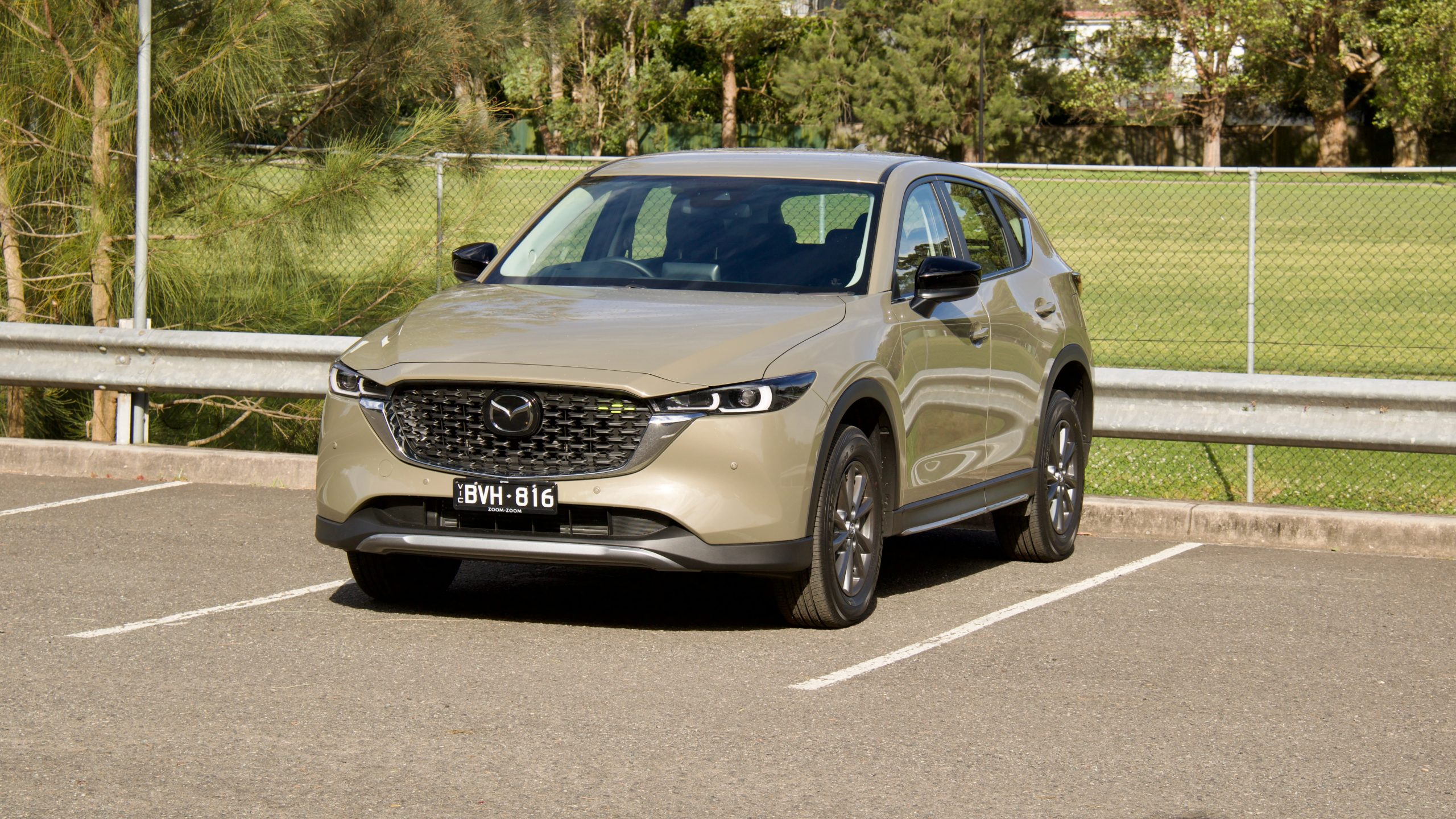
The current generation of CX-5 has been around since 2017, so it’s no spring chicken, but Mazda has given it a number of updates over the years, including an update which was released earlier this year, and a 2023 model year update that was released last month. We spent a week each with two closely related MY2022 CX-5 models, so read on to see if we think it’s the medium SUV to buy.
Price & Equipment: 7.5/10
The 2022 Mazda CX-5 range comprises six grades with three engine options and both front-wheel drive and all-wheel-drive options. Pricing starts at $34,390 plus on-road costs (around $39,500 drive away, depending on location) for the base Maxx variant, topping out with the flagship Akera diesel at $53,880 +ORC (around $59,500 drive away).
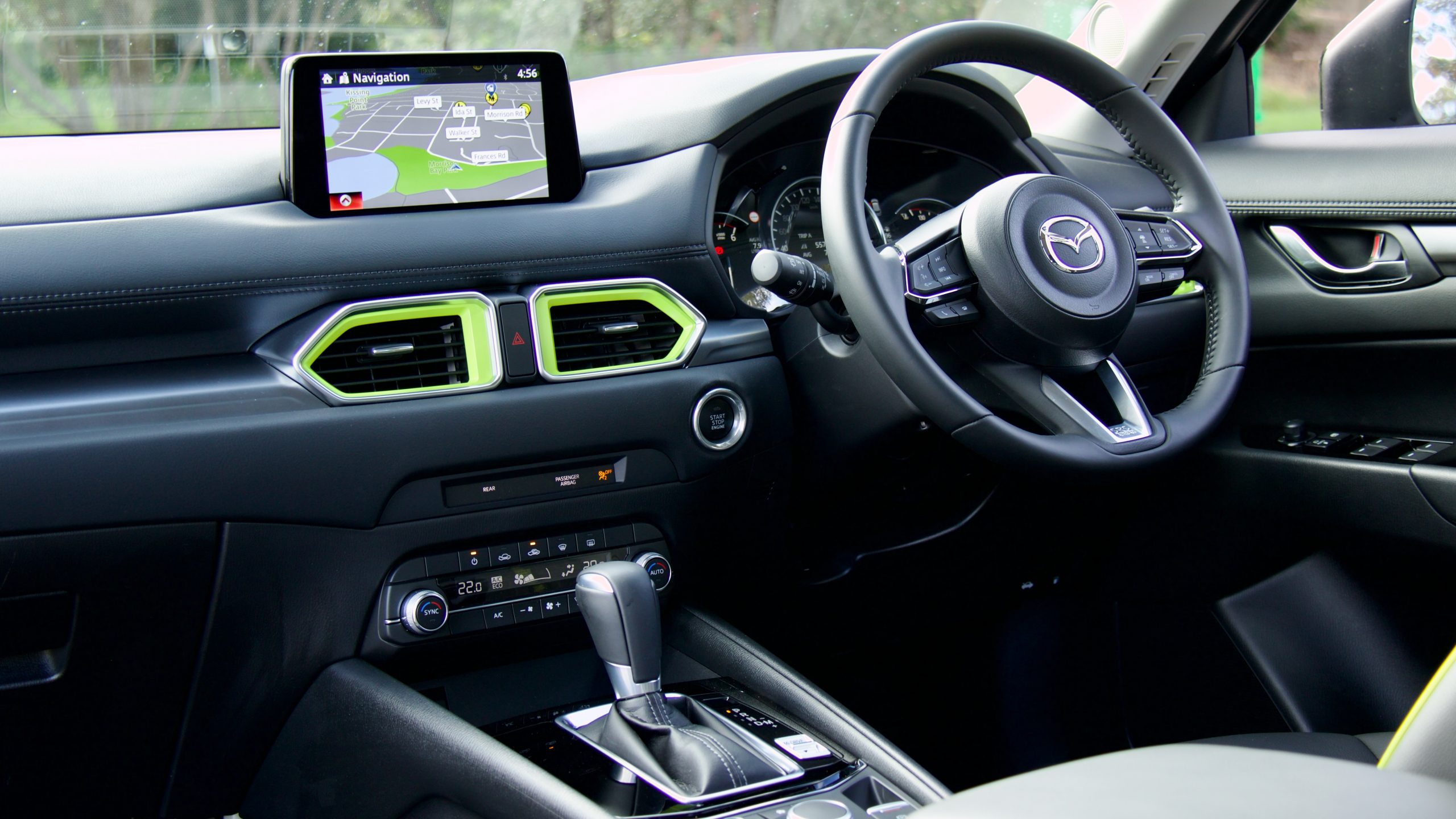
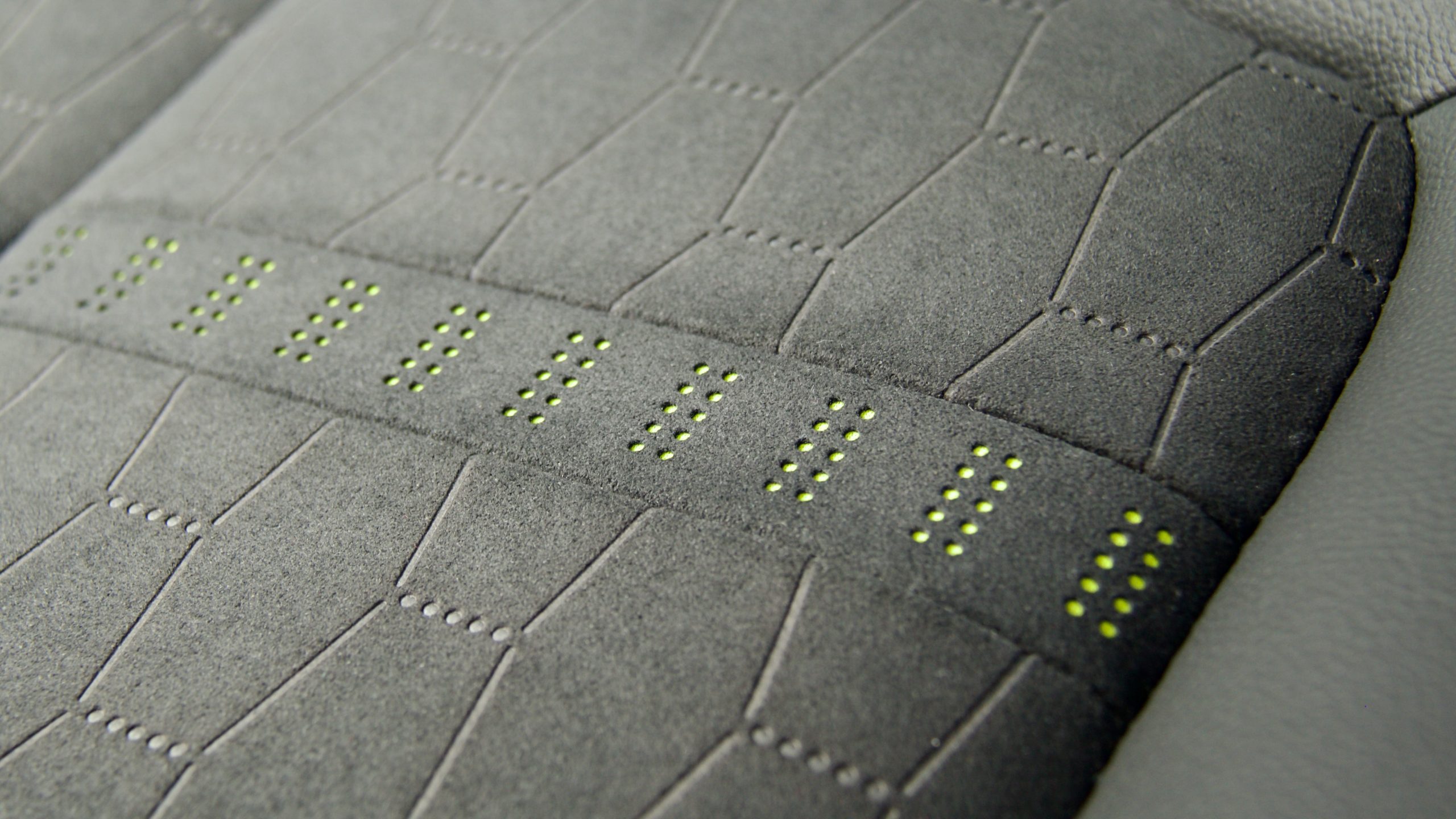
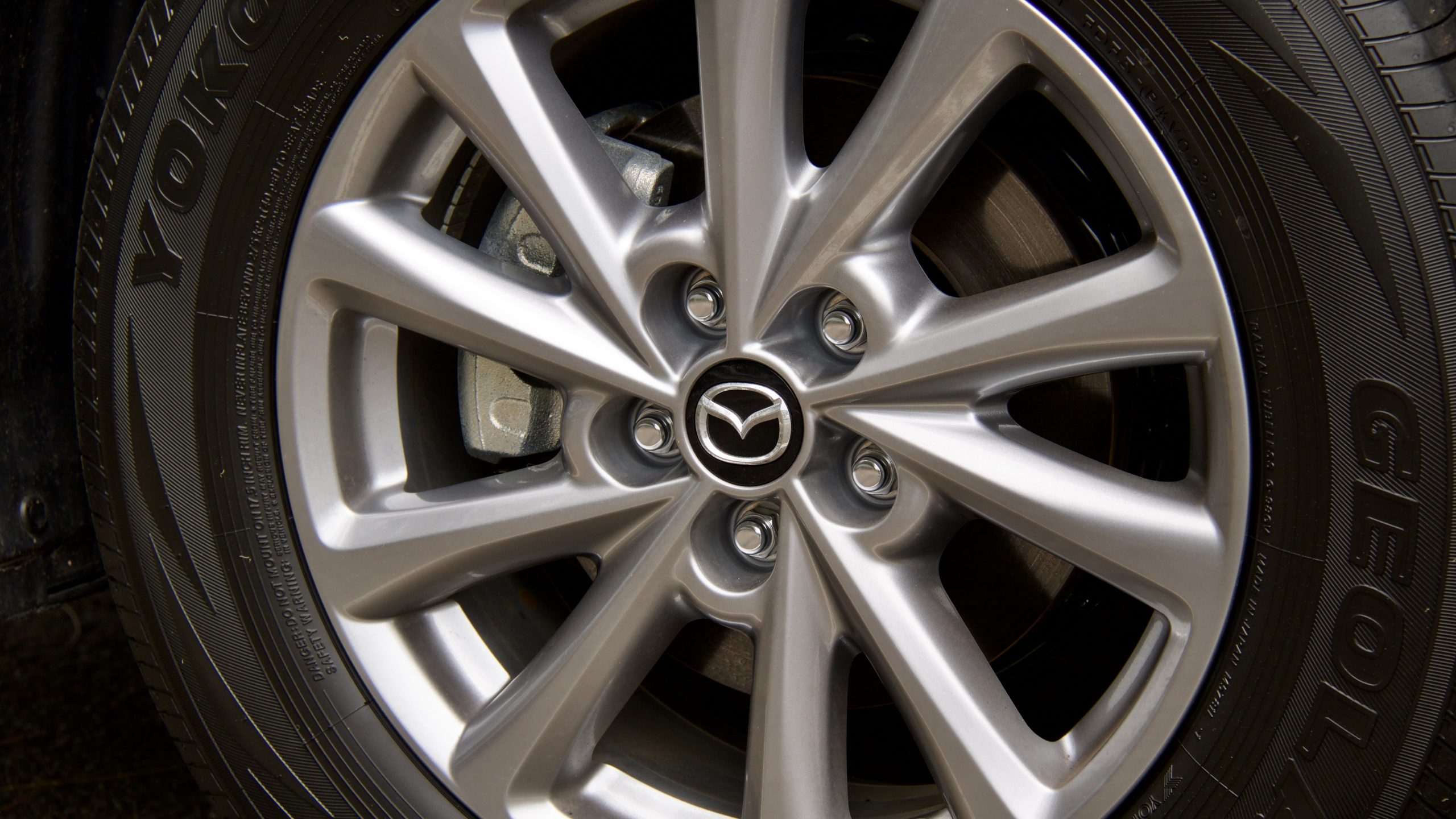
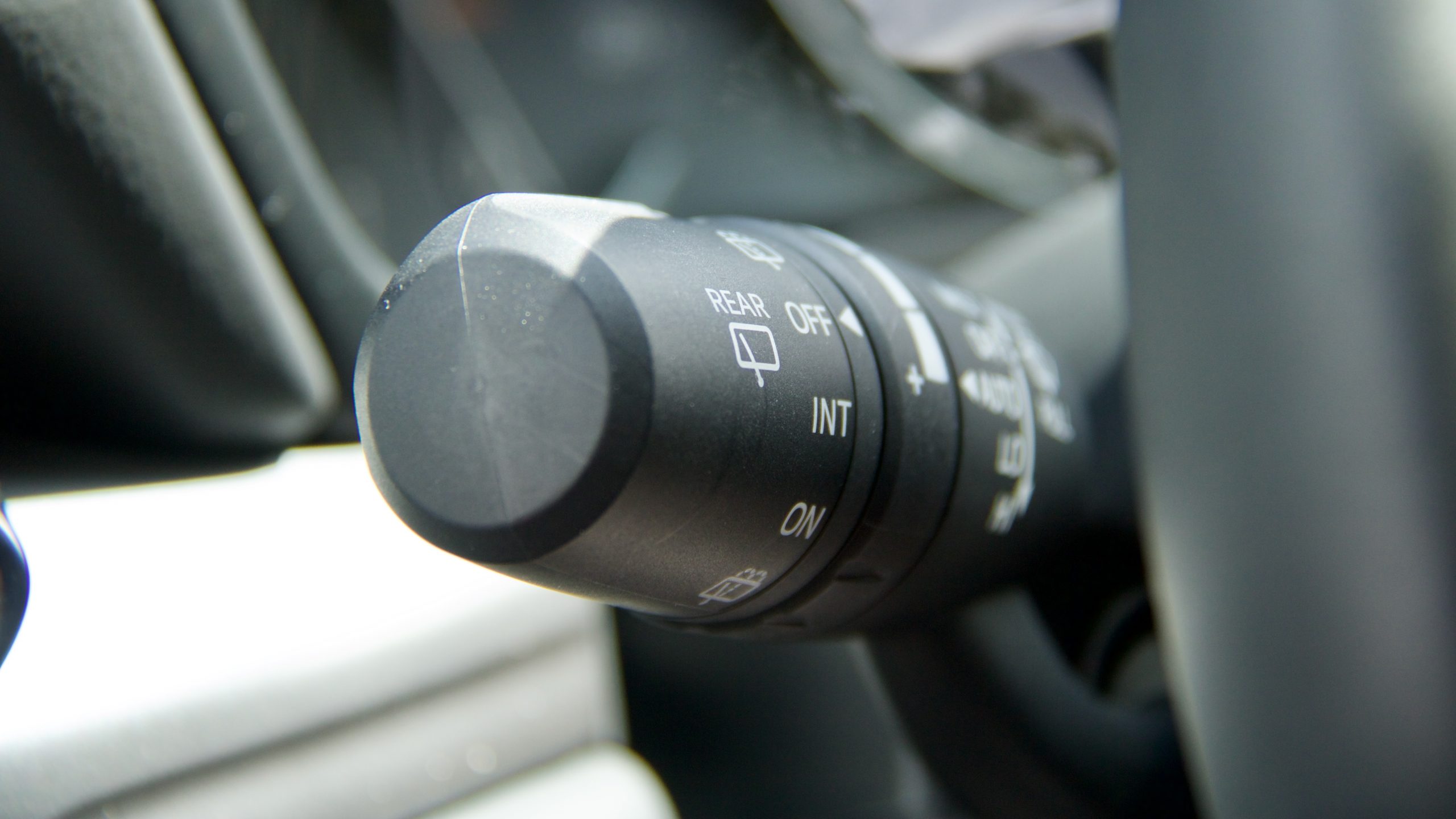
We tested two variants of the the CX-5: first was the Touring petrol all-wheel drive with premium paint, which is priced at $43,375 +ORC (around $49,000 drive away). The second CX-5 we tested was the Touring Active diesel, carrying a price of $46,675 +ORC (around $52,500 drive away).
Specifications for the 2022 Mazda CX-5 Active and Touring Active are very similar, and common equipment includes 17-inch alloy wheels, automatic all-LED lighting with automatic wipers, heated and auto-folding mirrors, an auto-dimming rear-view mirror, keyless entry and start, a leather steering wheel with paddle shifters and gear shifter, six-way manually adjustable front seats, ‘Maztex’ artificial leather and synthetic suede upholstery, a 7.0-inch digital instrument cluster, a heads-up display, an 8.0-inch touchscreen with wired Apple CarPlay and Android Auto, satellite navigation and digital radio, a six-speaker sound system, four USB-A charging points, a wireless phone charger and dual-zone climate control with rear vents.
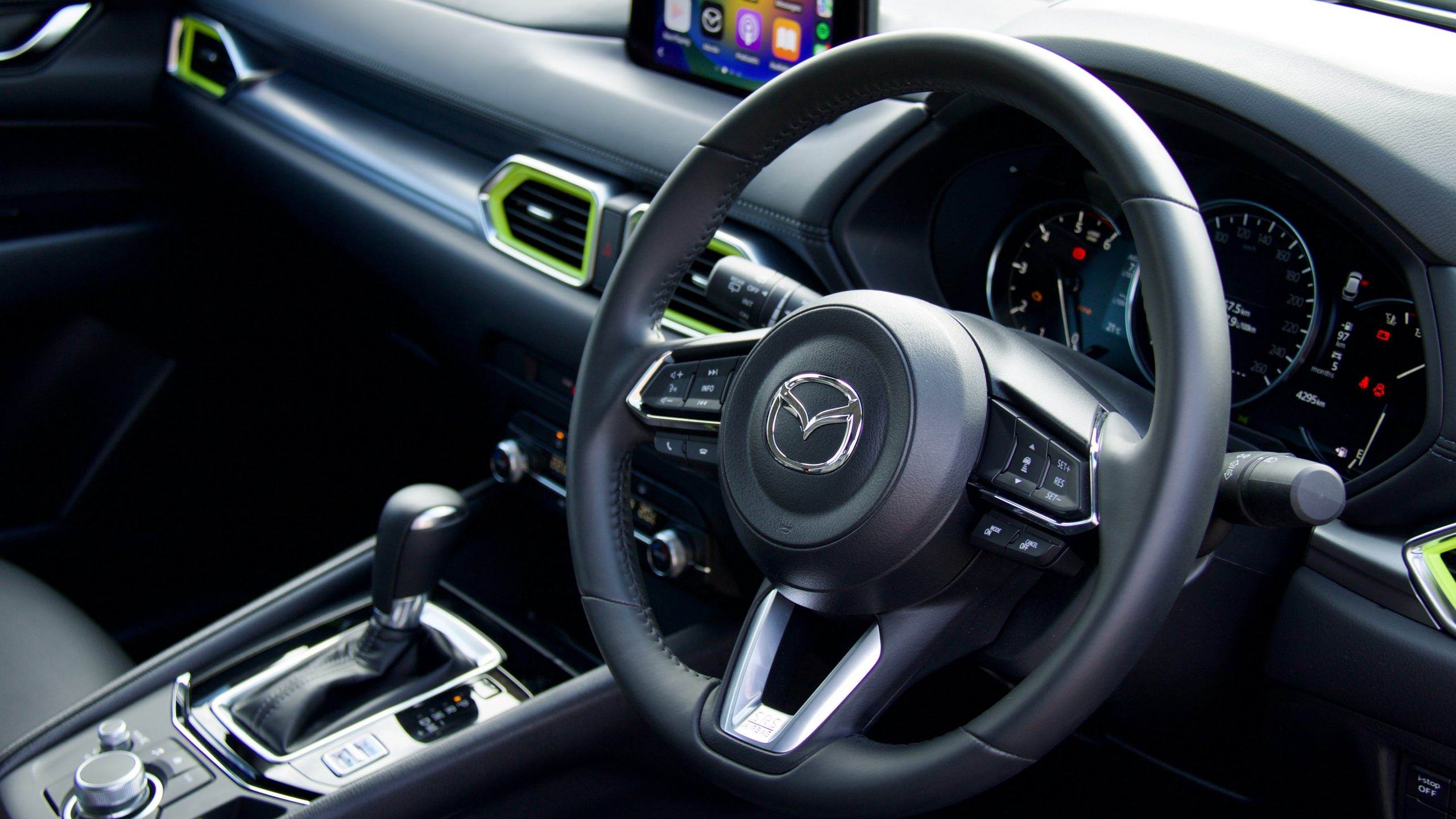
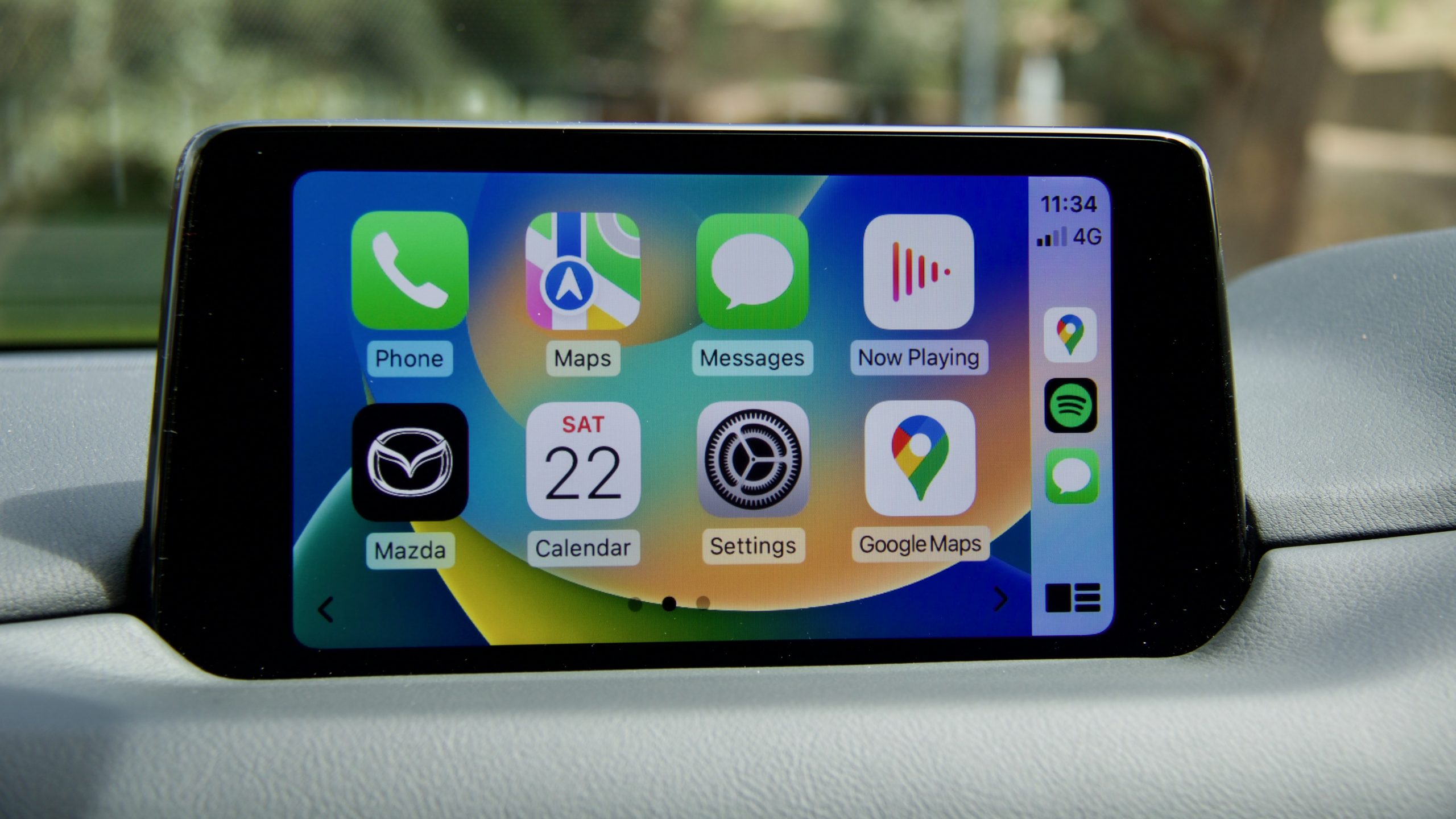
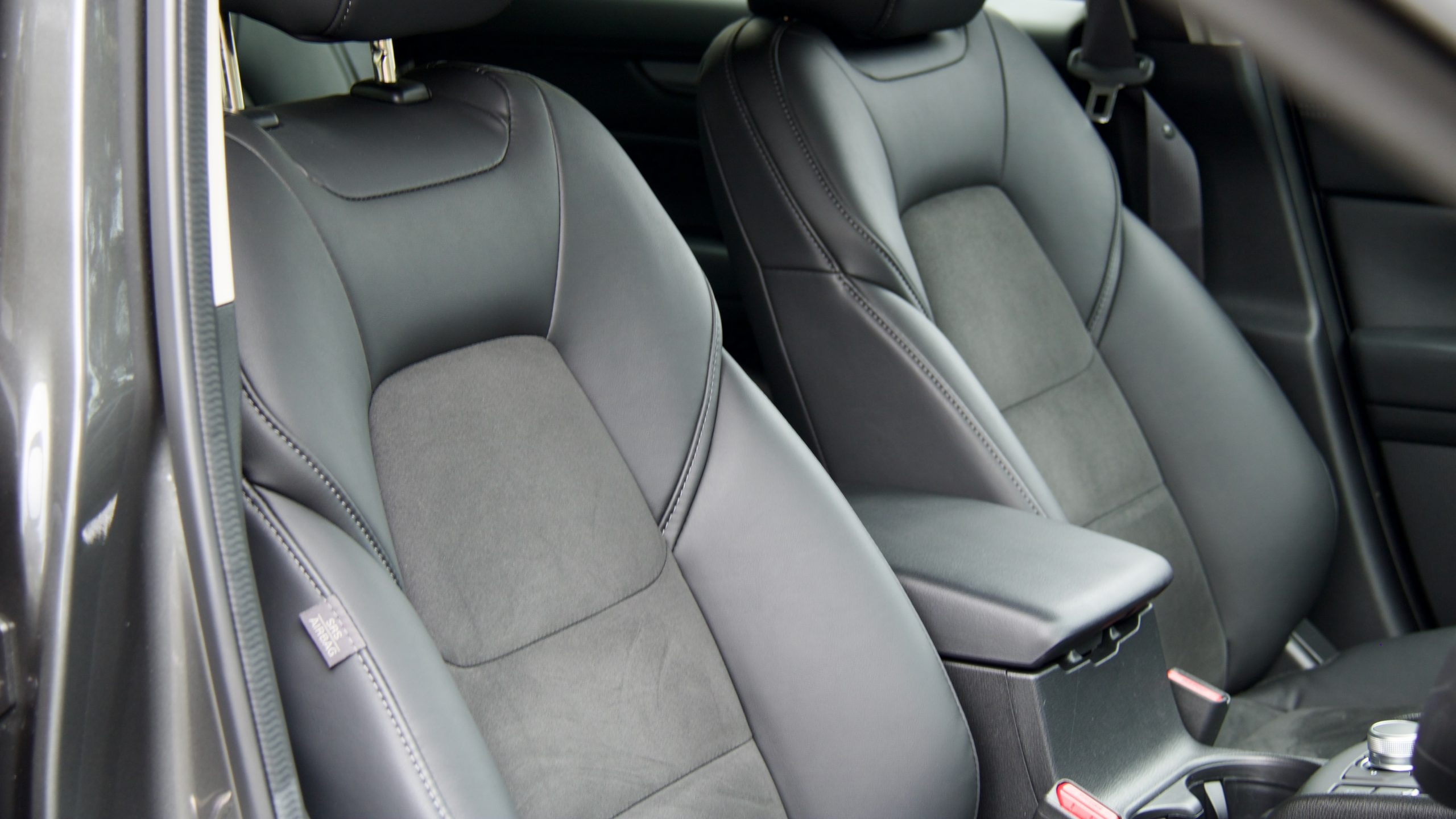
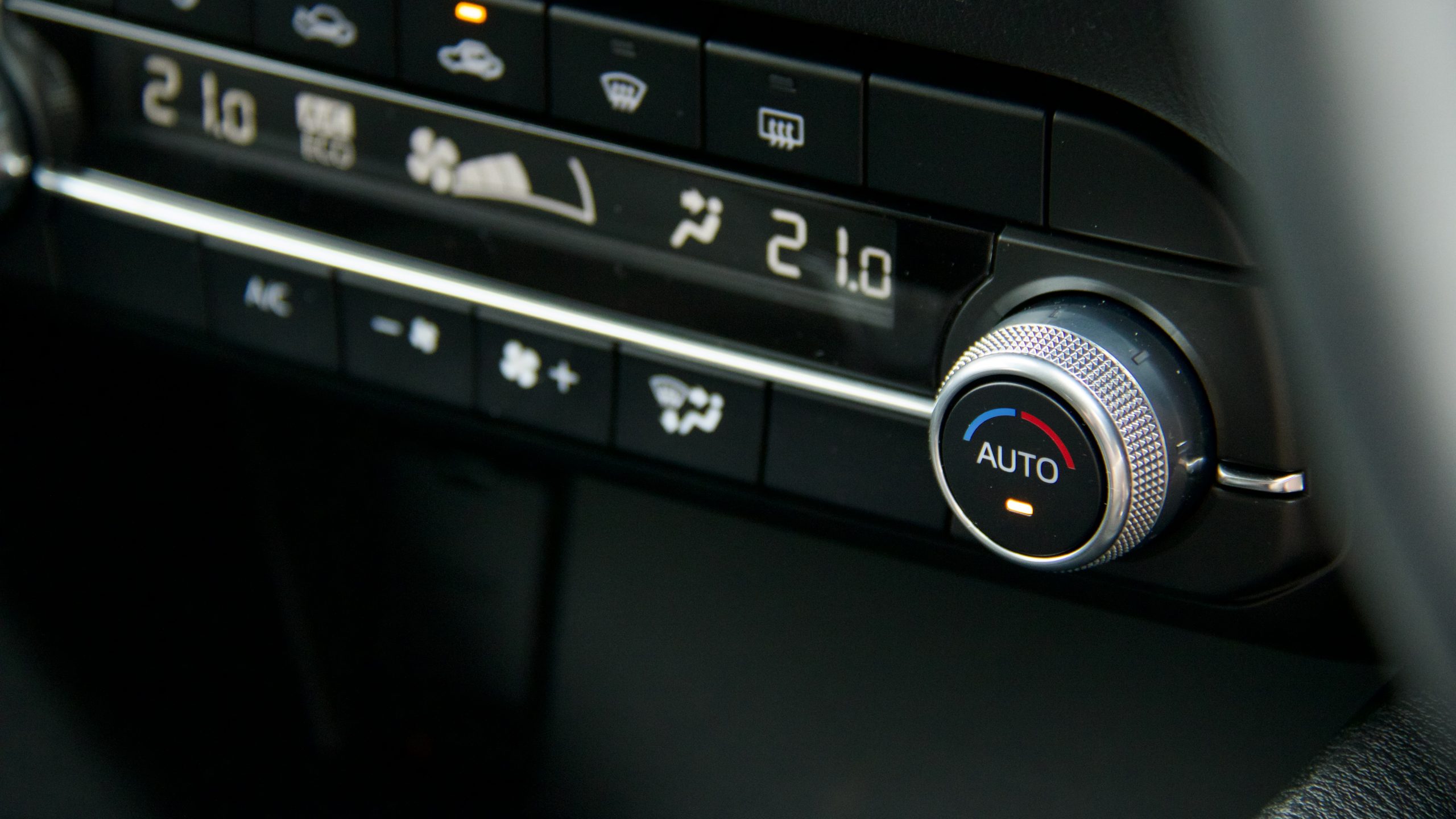
The CX-5 range received a five-star ANCAP rating courtesy of a range of safety features, which includes six airbags, automatic high beam, road sign recognition, tyre pressure monitoring, adaptive cruise control with stop and go functionality, lane departure warning with lane keep assist, blind-spot monitoring with rear cross traffic alert, autonomous emergency braking (AEB) in both forward and reverse, driver attention monitoring, front and rear parking sensors and a reversing camera.
The adventure-themed 2022 Mazda CX-5 Touring Active only visual upgrades like green interior highlights, gloss black exterior highlights and grey metallic alloys. However, unlike the standard Touring, the Active also has the option of the 2.2 litre twin-turbo four-cylinder diesel engine with all-wheel drive.
The only option Mazda offers across the CX-5 range is colour, with ‘Eternal Blue’, ‘Deep Crystal Blue’, ‘Jet Black’, ‘Snowflake White’ and ‘Sonic Silver’ making up the no-cost options. ‘Soul Red Crystal’, ‘Polymetal Grey’ and the colours that our test cars featured: ‘Machine Grey’ (Active) and ‘Zircon Sand’ (Touring Active) are all $795 options.
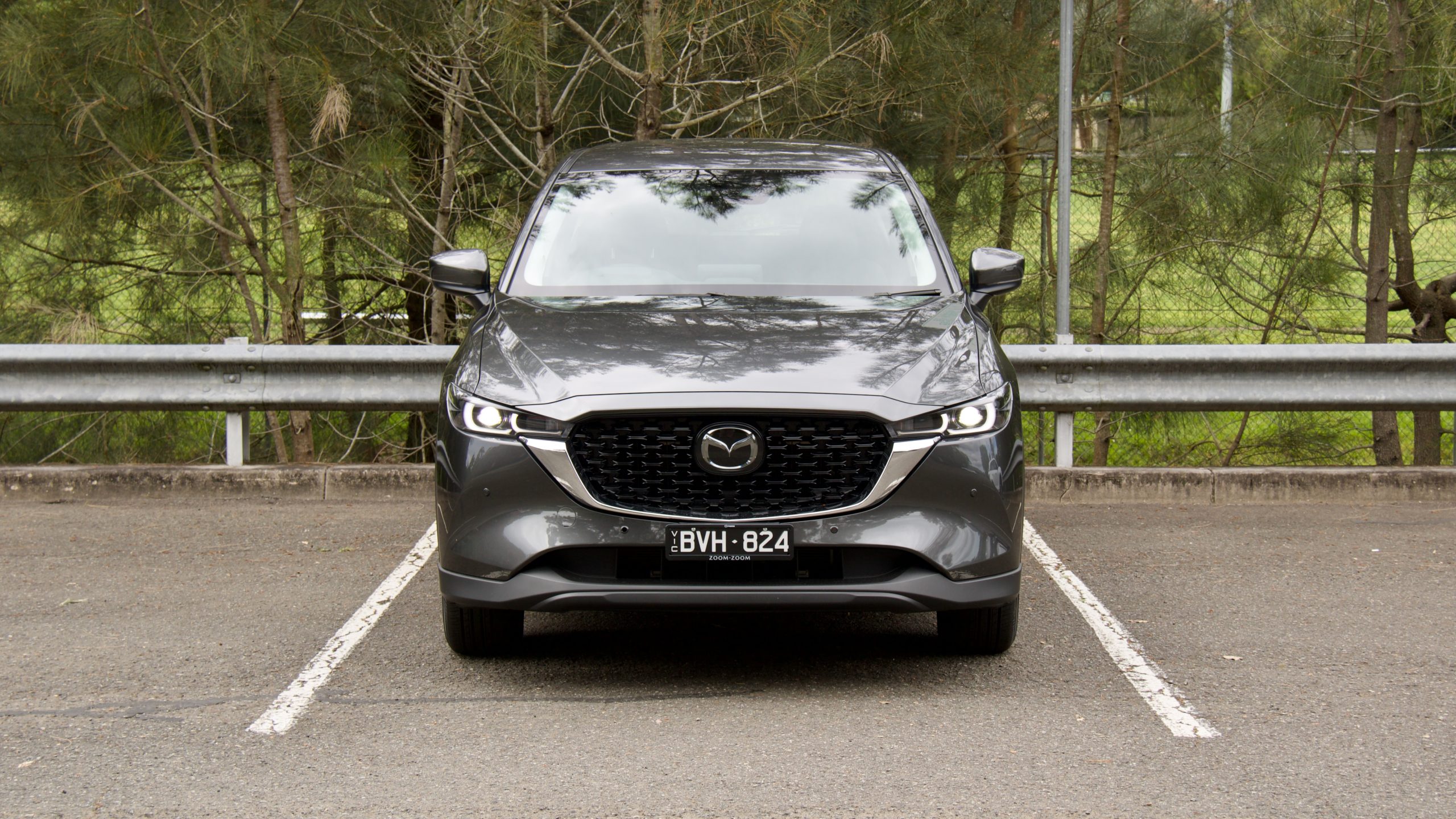
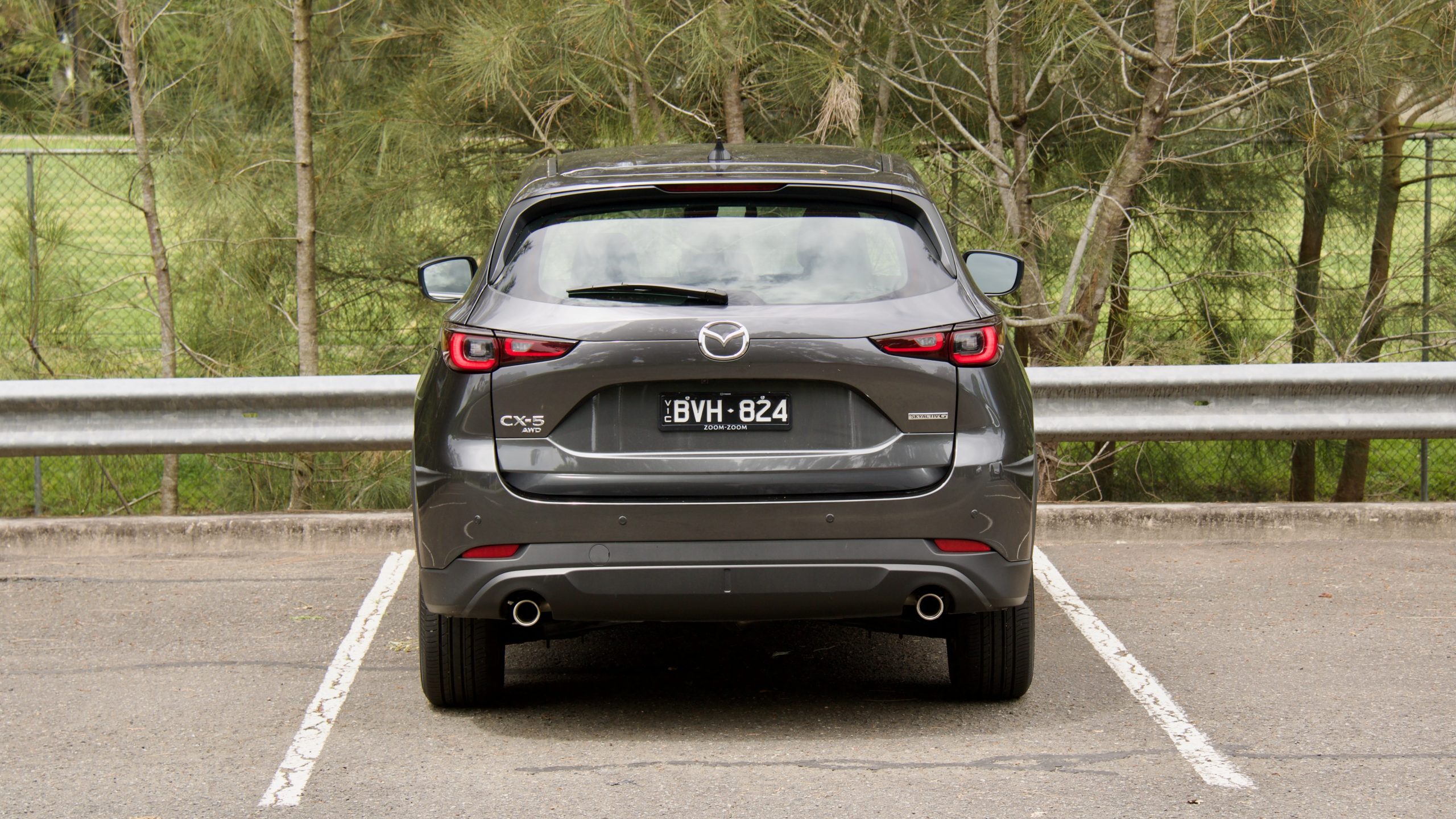
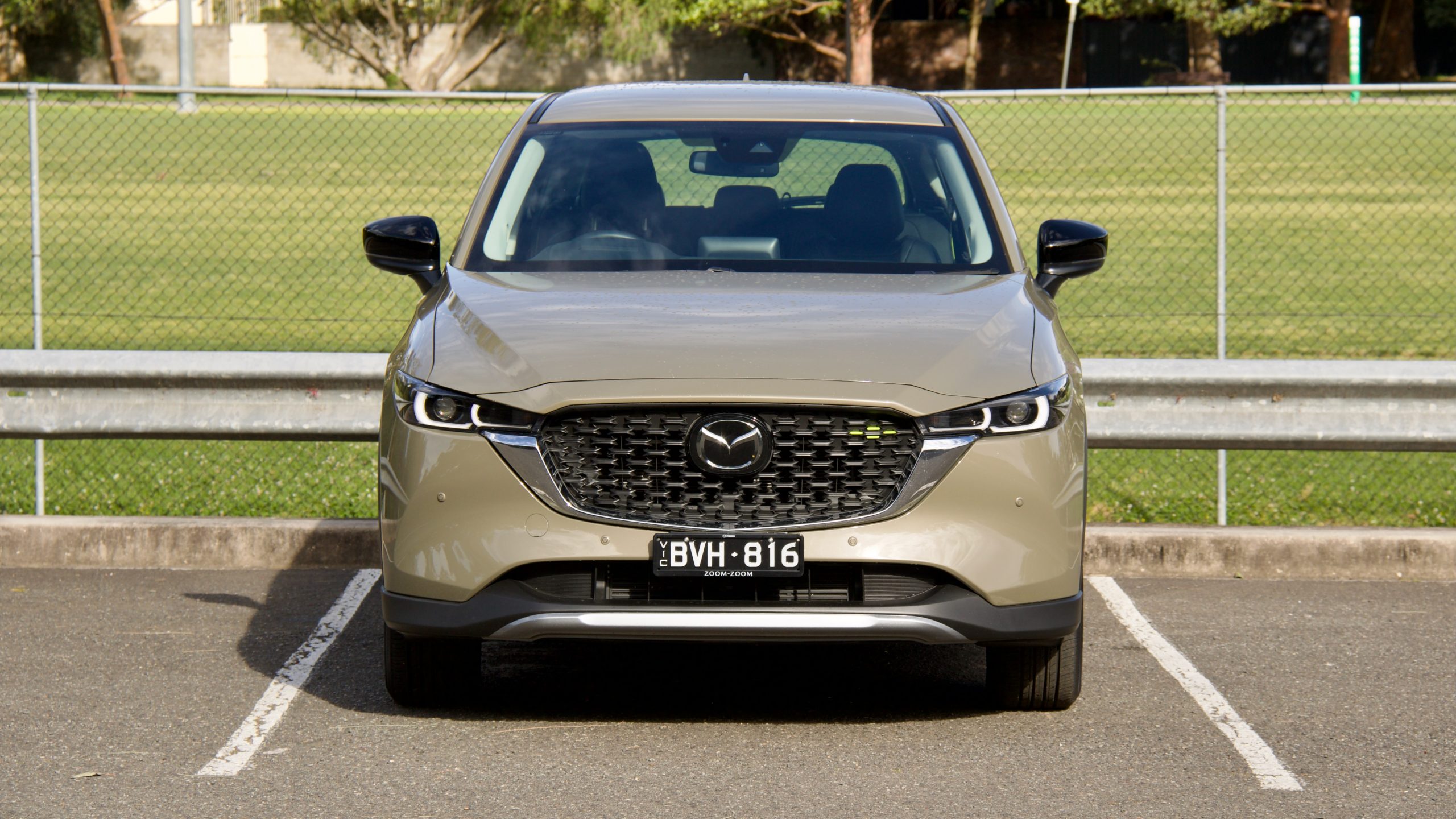
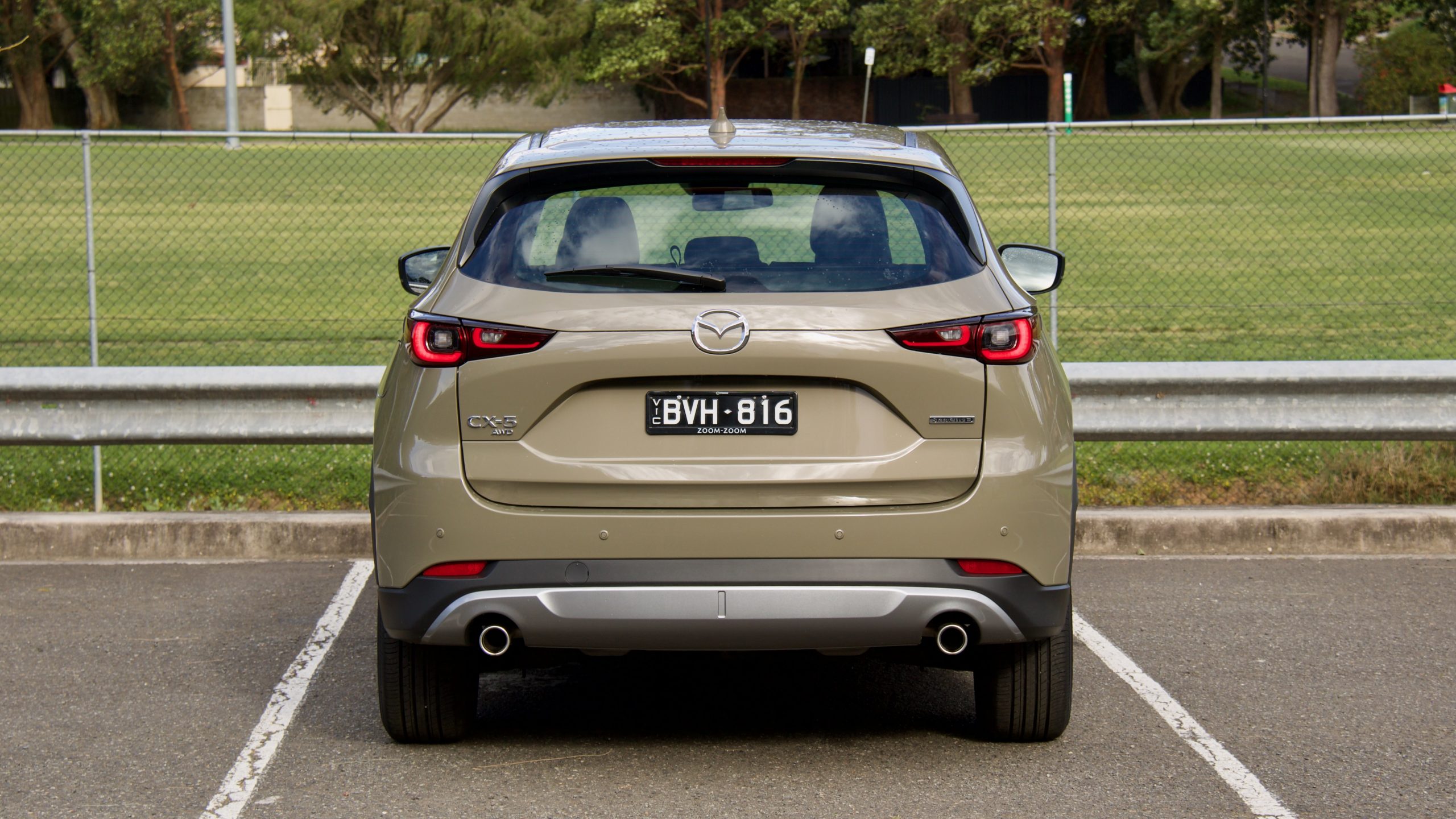
The medium SUV market is crowded with options, but we picked both the Toyota RAV4 and Kia Sportage to compare to our pair of CX-5 variants. We compared the CX-5 Active AWD petrol to the Toyota RAV4 Cruiser petrol 2WD (there is no petrol AWD RAV4 for offer), which is priced at $43,250 +ORC (around $48,500 drive away, depending on location) and the Kia Sportage SX+ AWD petrol, which is priced at $43,500 +ORC (around $47,900 drive away). We compared the CX-5 Active Touring AWD diesel to the Toyota RAV4 XSE hybrid AWD (Toyota doesn’t offer a diesel RAV4, so we went with the hybrid) that’s priced at $46,250 (around $51,500 drive away), and the SX+ diesel that’s priced at $46,900 +ORC (around $51,500 drive away).
In terms of equipment levels, the RAV4 Cruiser 2WD petrol features a fair bit of kit that the CX-5 is missing, including fog lamps, LED daytime running lights, a sunroof, heated and ventilated front seats, a 10-way electric driver’s seat with memory, ambient lighting, a digital rearview mirror, electric tailgate, a 360-degree camera, knee airbag, larger 19-inch alloys, a nine-speaker JBL sound system, an extra USB charging port and leather seats (the CX-5 has synthetic leather and suede). The CX-5 fights back with an AWD drivetrain (the RAV4 is 2WD), a larger 2.5 litre petrol engine, paddle shifters, a heads-up display, driver attention alert and a tyre pressure monitoring system.
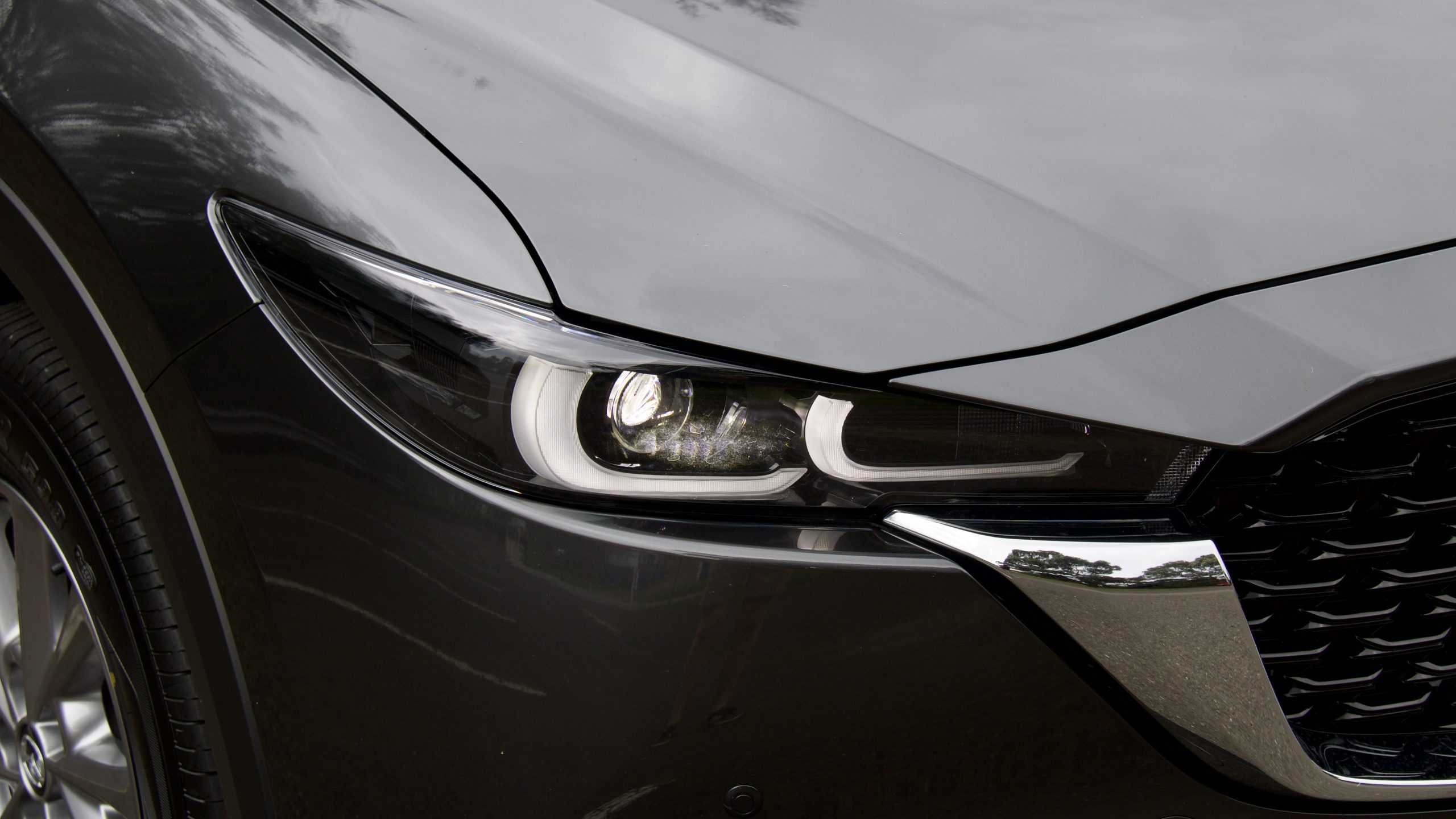
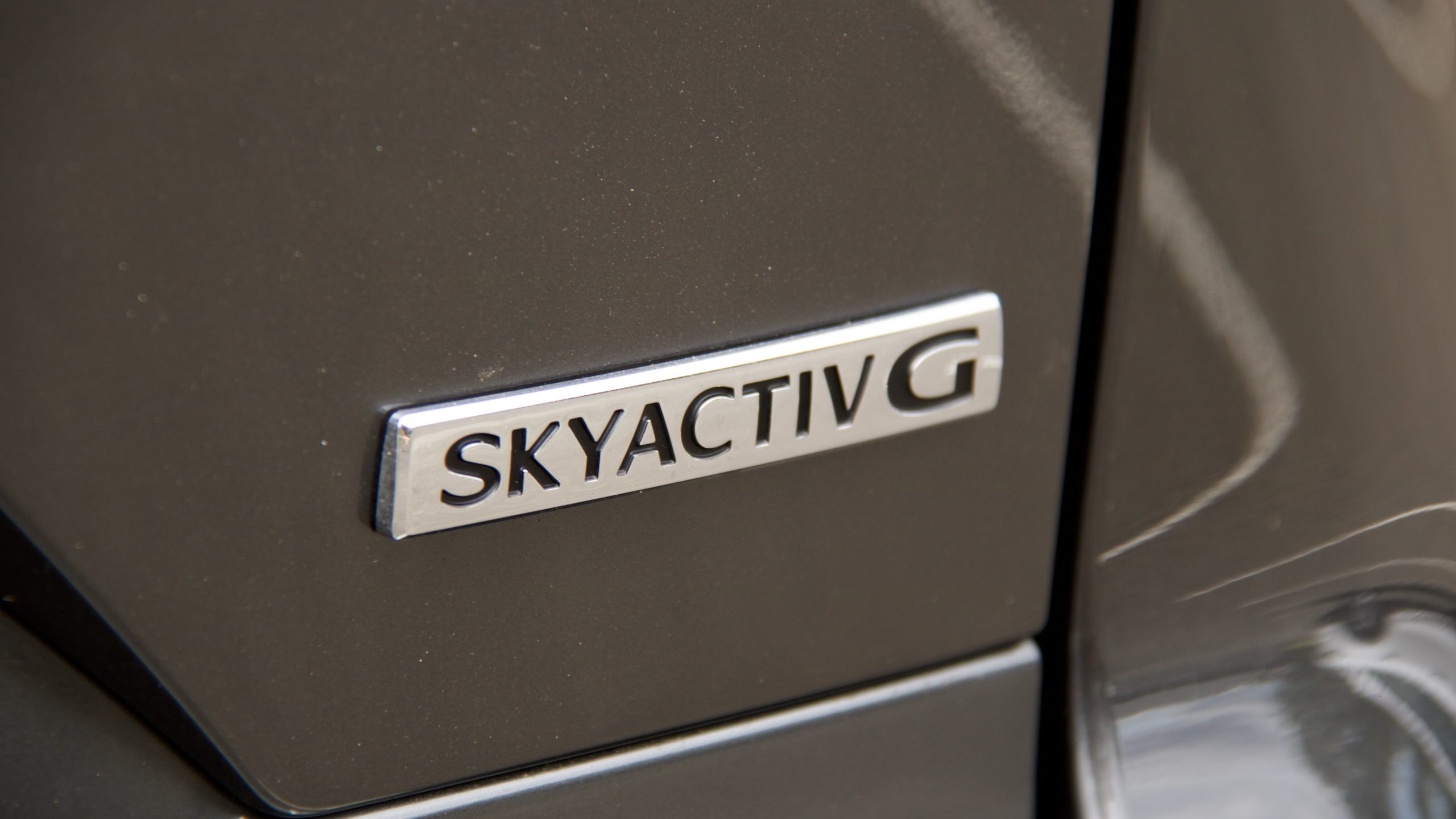
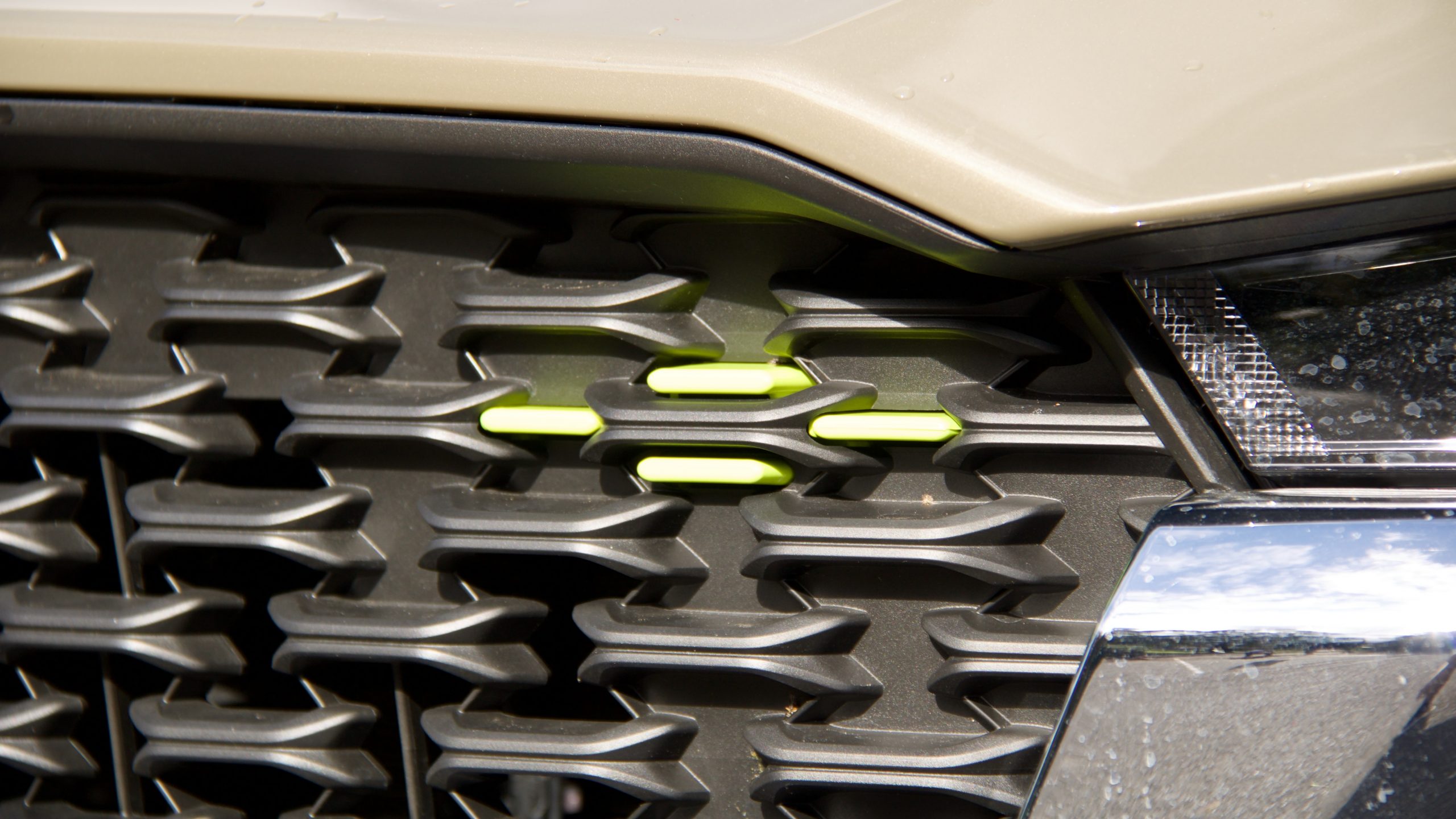
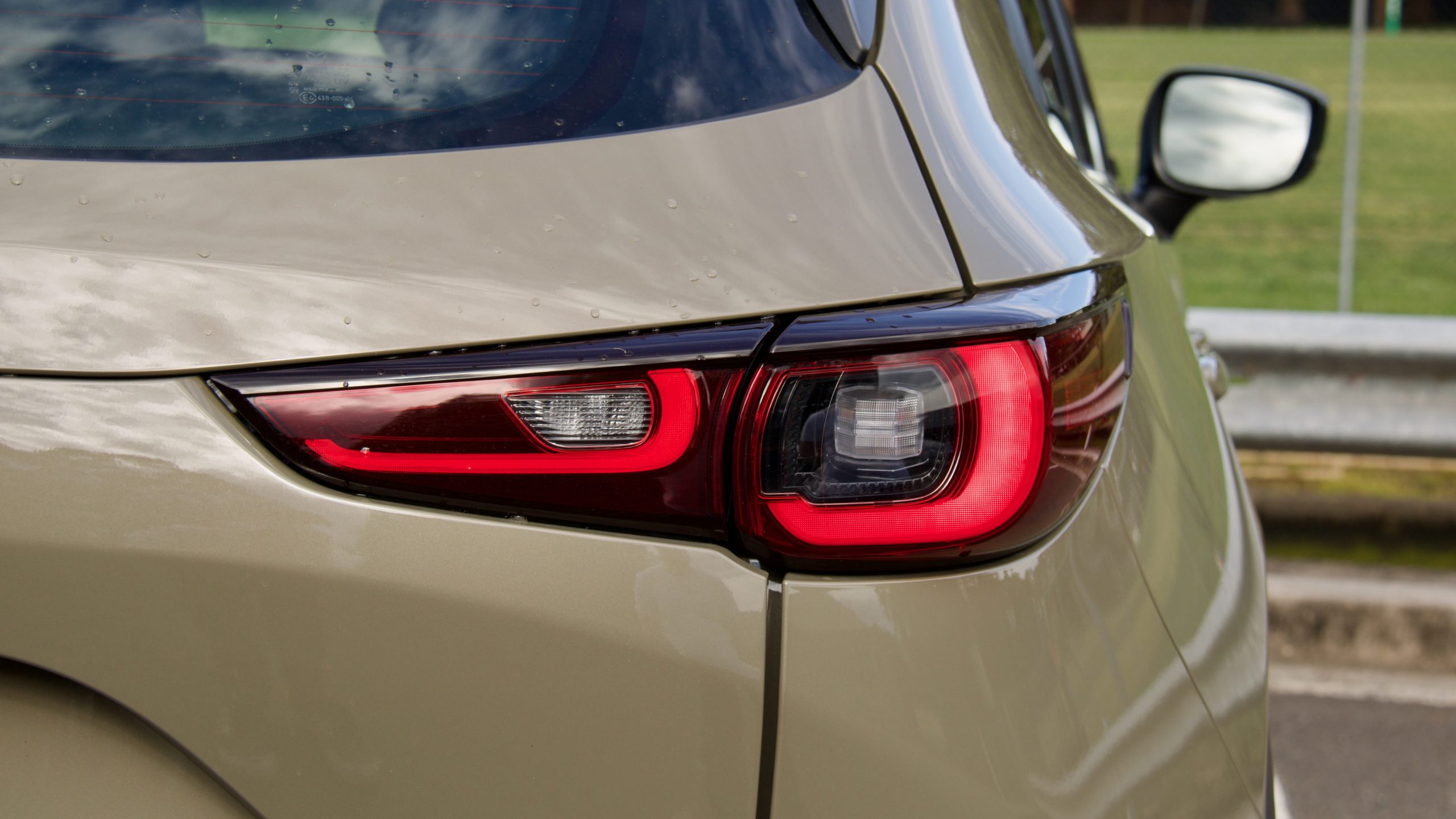
Compared to the Sportage SX+ petrol AWD, the CX-5 has a heads-up display, a larger 7.0-inch driver information display (4.2-inch in the Sportage) and a wireless phone charger. In favour of the Sportage are a hands-free power tailgate, multi-collision braking, blind-spot and rear-cross traffic collision avoidance assist, safe exist assist, LED daytime running lights, larger 19 inch alloys, a larger 12.3-inch infotainment system, an eight-speaker Harman Kardon sound system and eight-way electric adjustment for the driver’s seat. This feature comparison between also holds for comparing the Mazda CX-5 Active Touring AWD Diesel and the Kia Sportage SX+ AWD Diesel.
Comparing equipment between the Mazda CX-5 Touring Active diesel and the Toyota RAV4 XSE Hybrid AWD shows the Toyota trumps with fog lights, LED daytime running lights, heated front seats, a power tailgate, a knee airbag, larger 18-inch alloys, 10-way electric power adjustment for the driver’s seat and an extra USB charging port. The CX-5 counters with a head up display, tyre pressure mirroring and auto-folding mirrors.
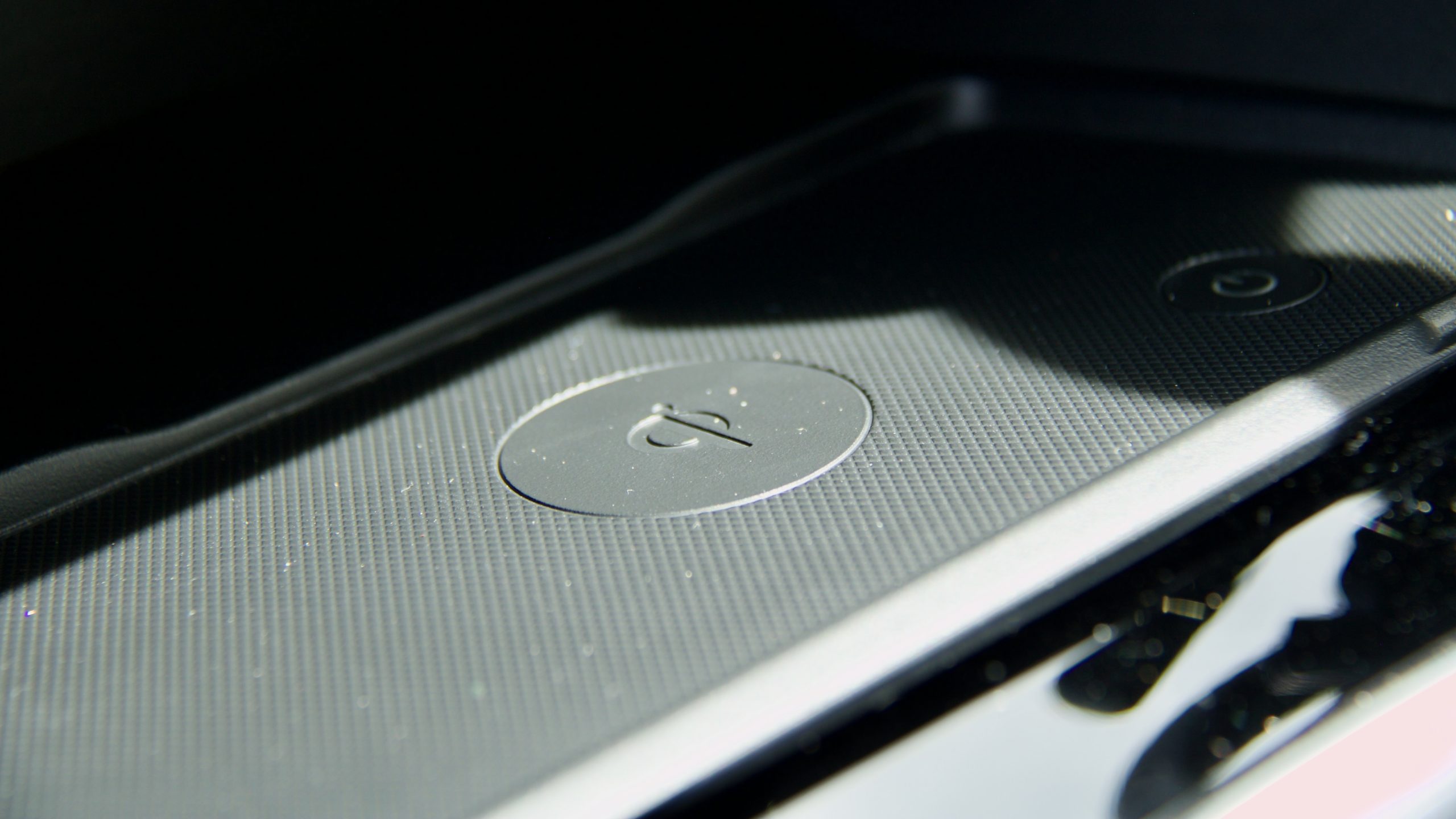
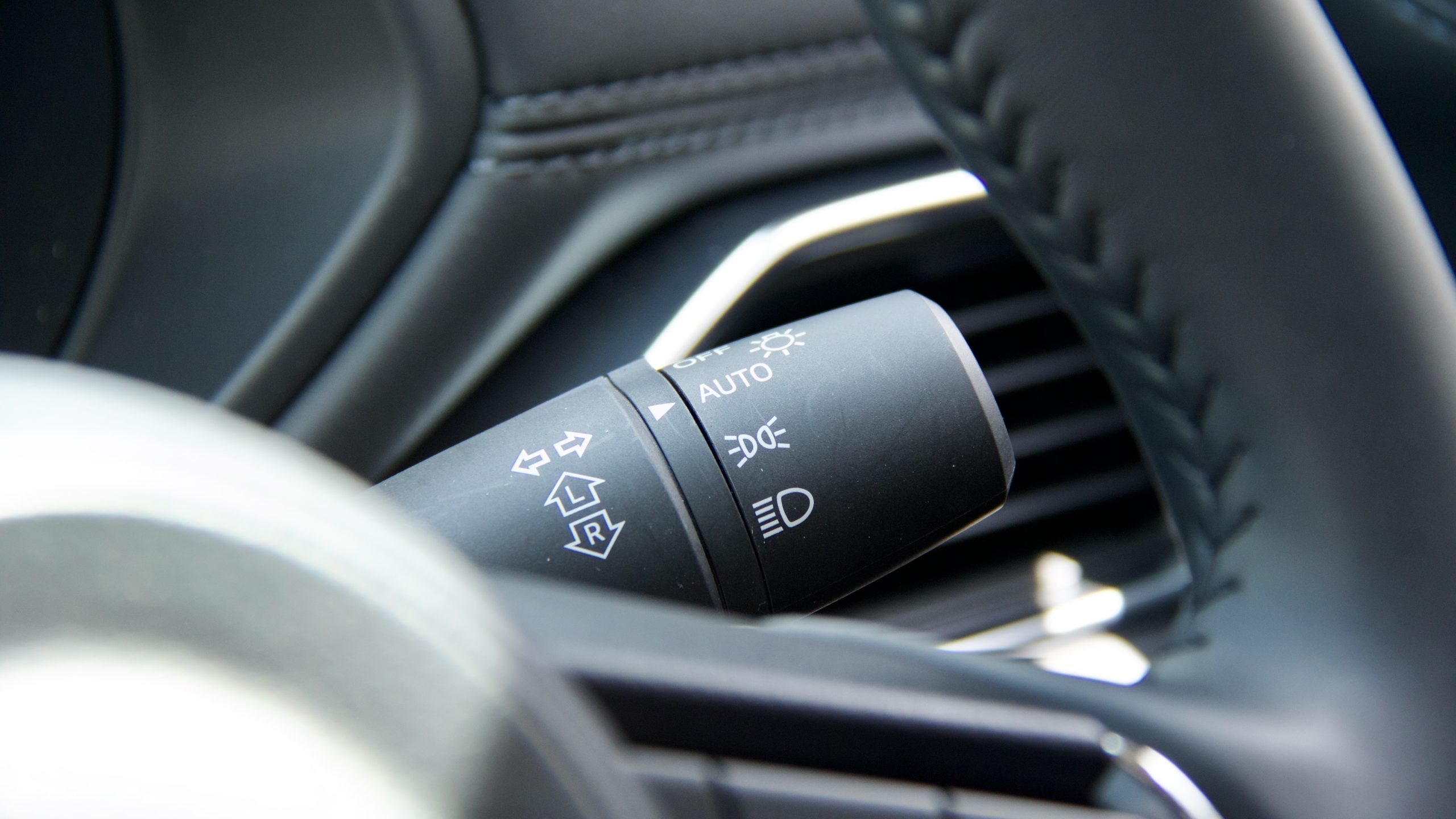
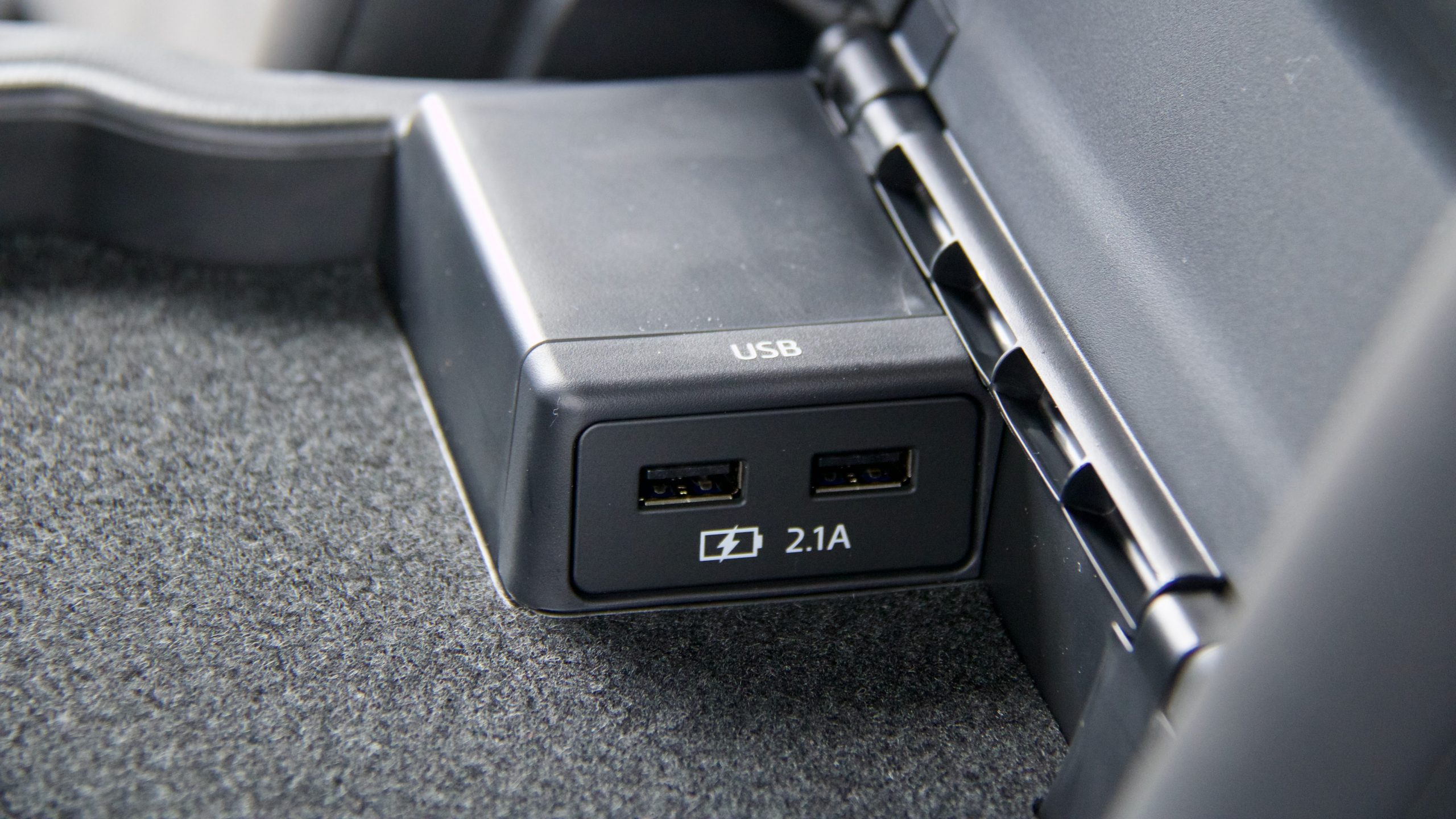
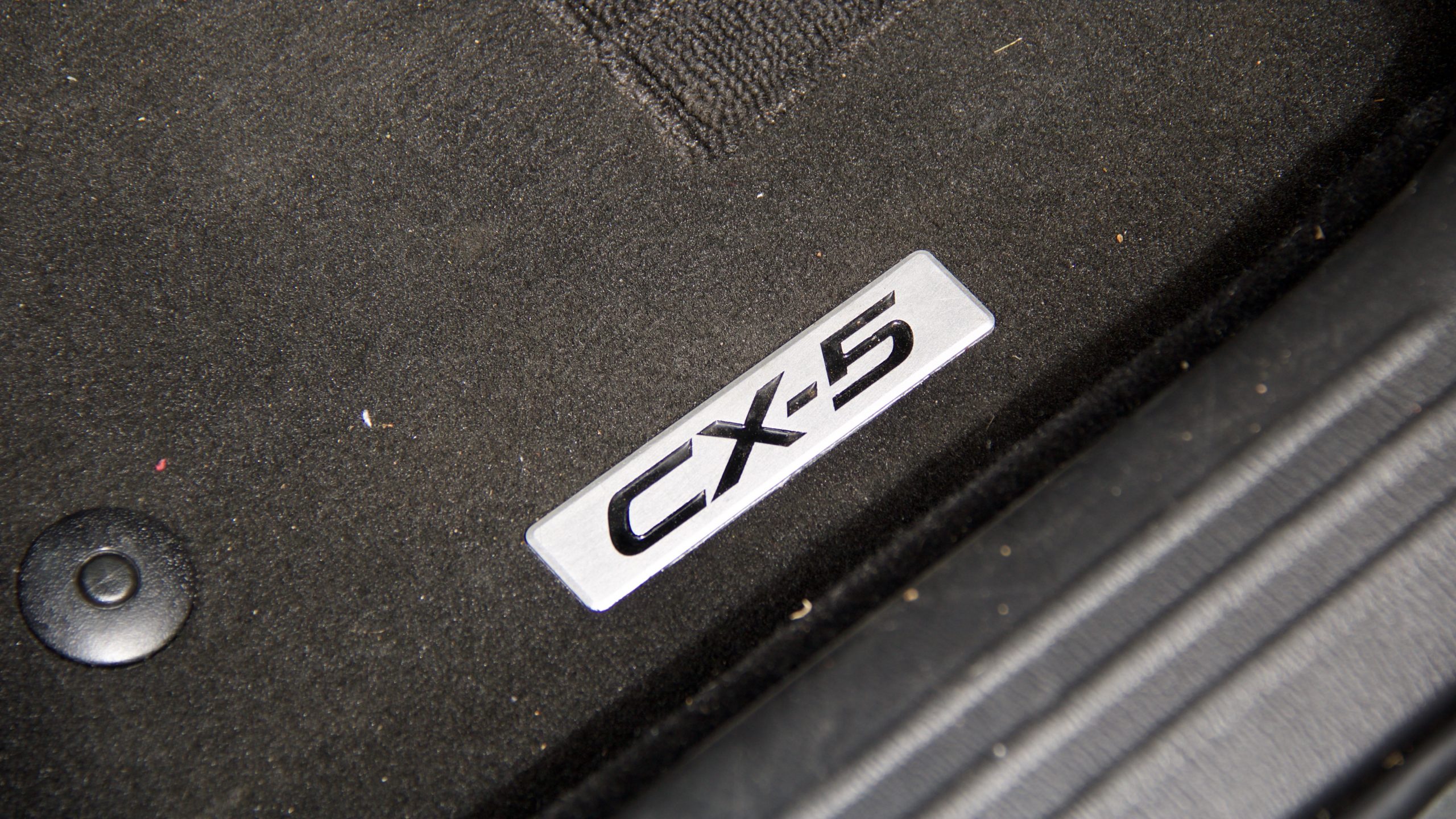
In terms of value, the 2022 Mazda CX-5 Touring and Touring Active aren’t cheap and are missing a bit of equipment, especially when compared to competitors. We think at this price point, equipment like heated front seats, a 360-degree camera, electric front seat adjustment, a power boot door, LED daytime running lights and a larger infotainment screen should be standard on the Mazda (the 2023 CX-5 added a 10.25-inch infotainment screen). The value equation is complicated by the lack of a front-wheel drive model of either the Active or Active Touring models – we think that plenty of potential CX-5 drivers don’t need all-wheel drive and a front wheel drive variant would be a much better value proposition. We’d also suggest that only reason that the Active Touring model makes sense value-wise is for the diesel engine, which isn’t available for the standard Touring.
Performance & Economy: 8/10
Our two CX-5 models, while very similar in most ways, have very different engines. As previously mentioned, the Touring is only available with a 2.5 litre petrol engine, where as the Touring Active can be had with the same petrol engine as the standard Touring, or an optional 2.2 litre turbo diesel engine, which our test car was equipped with.
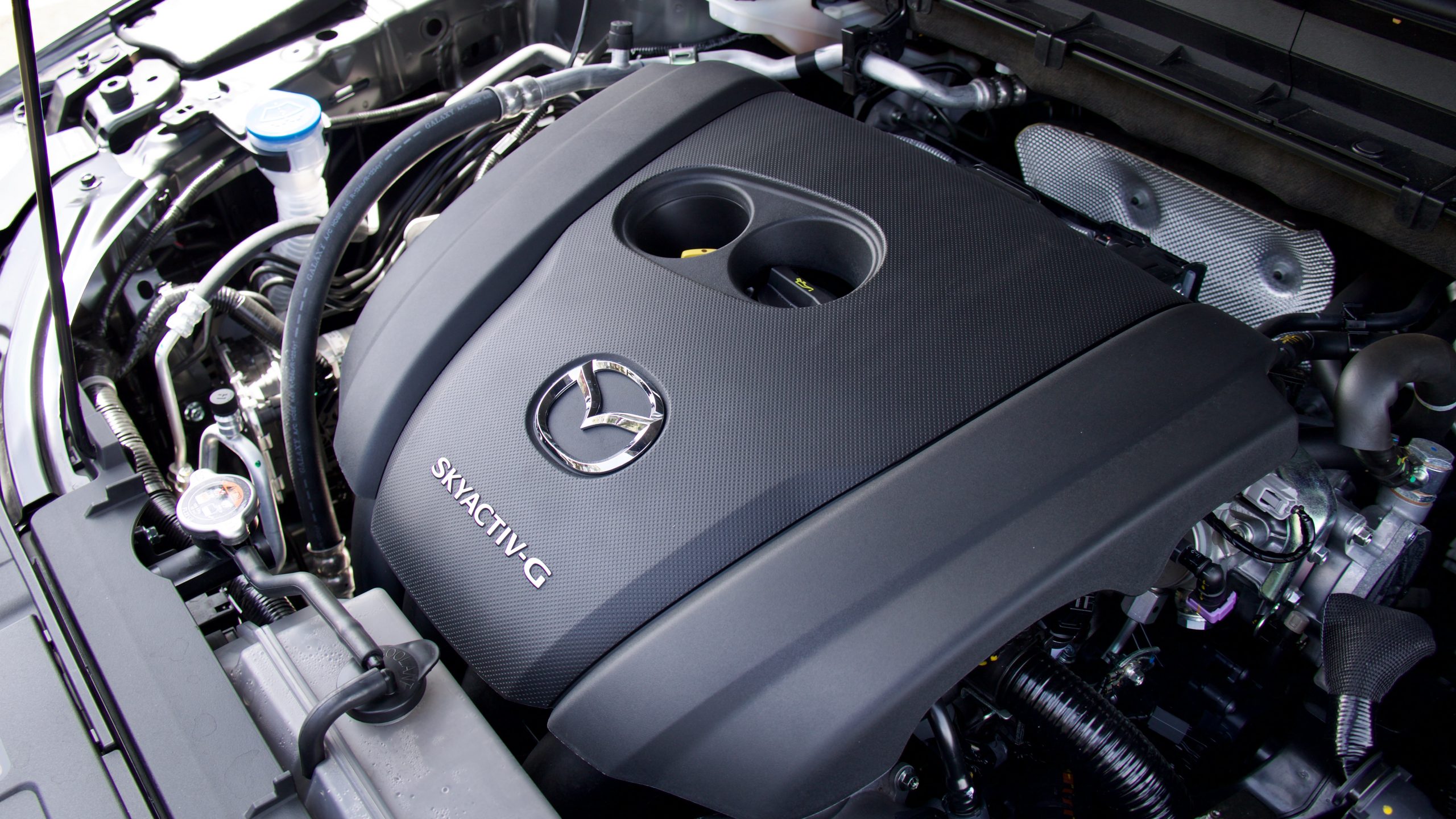
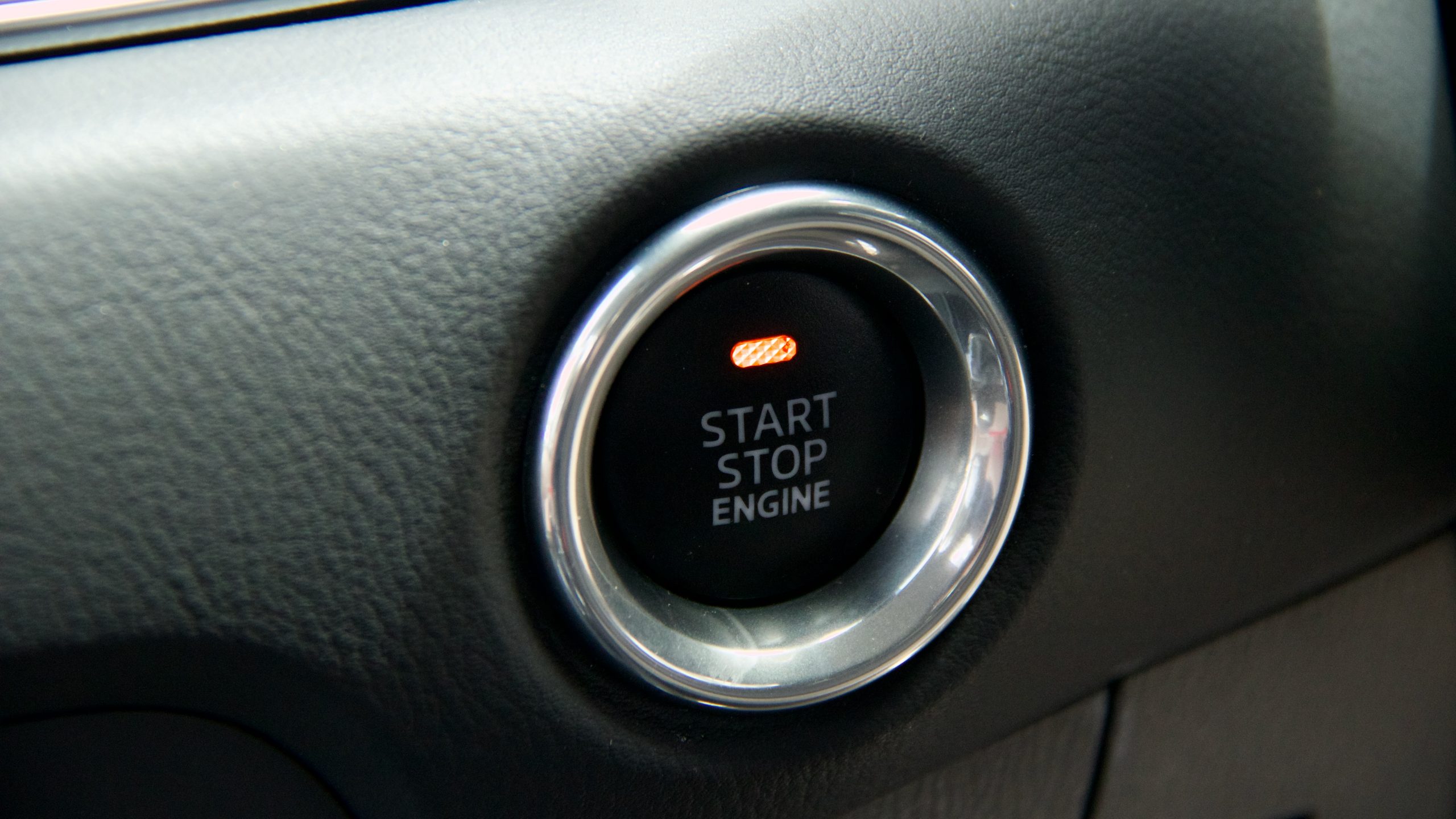
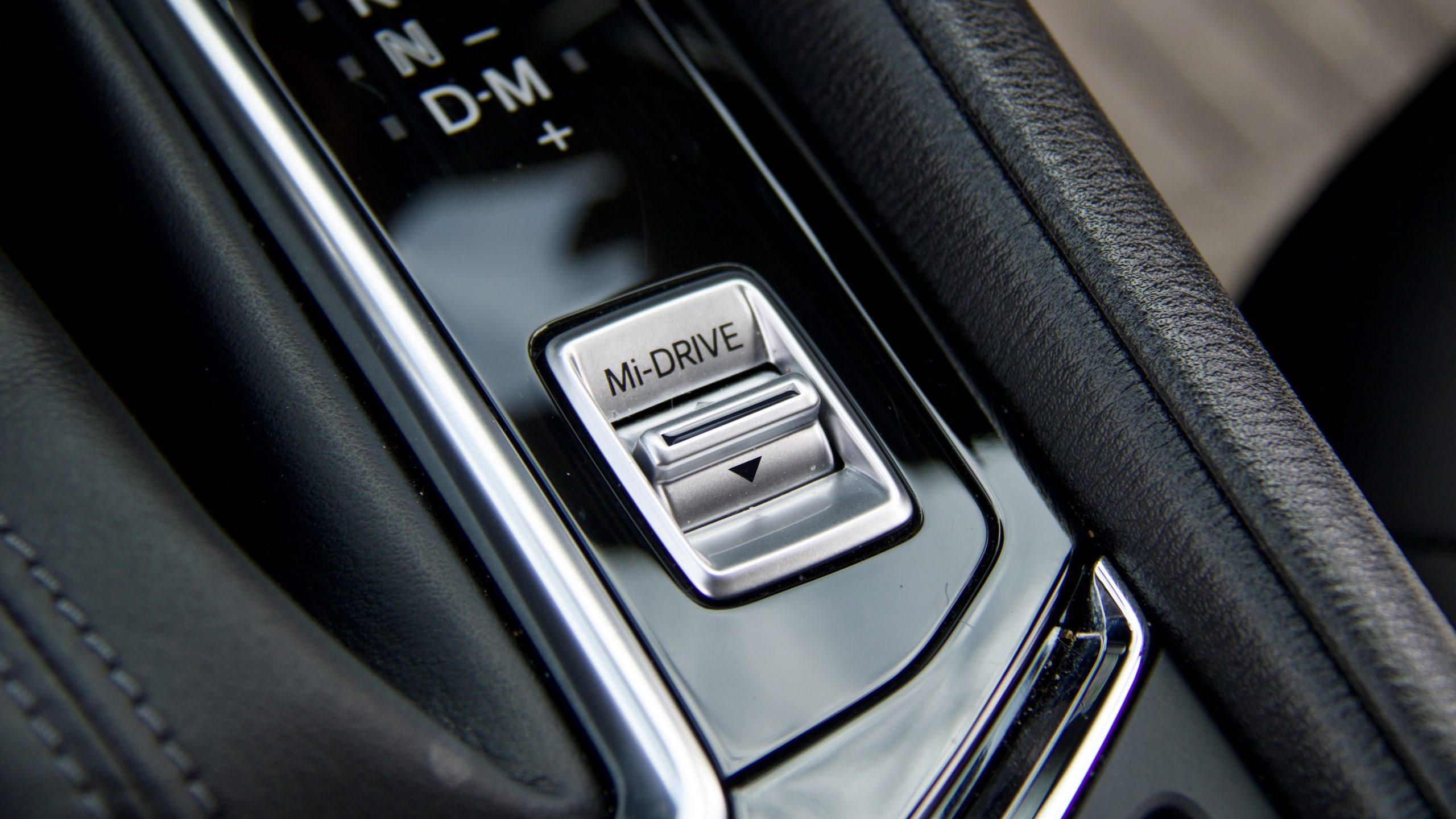
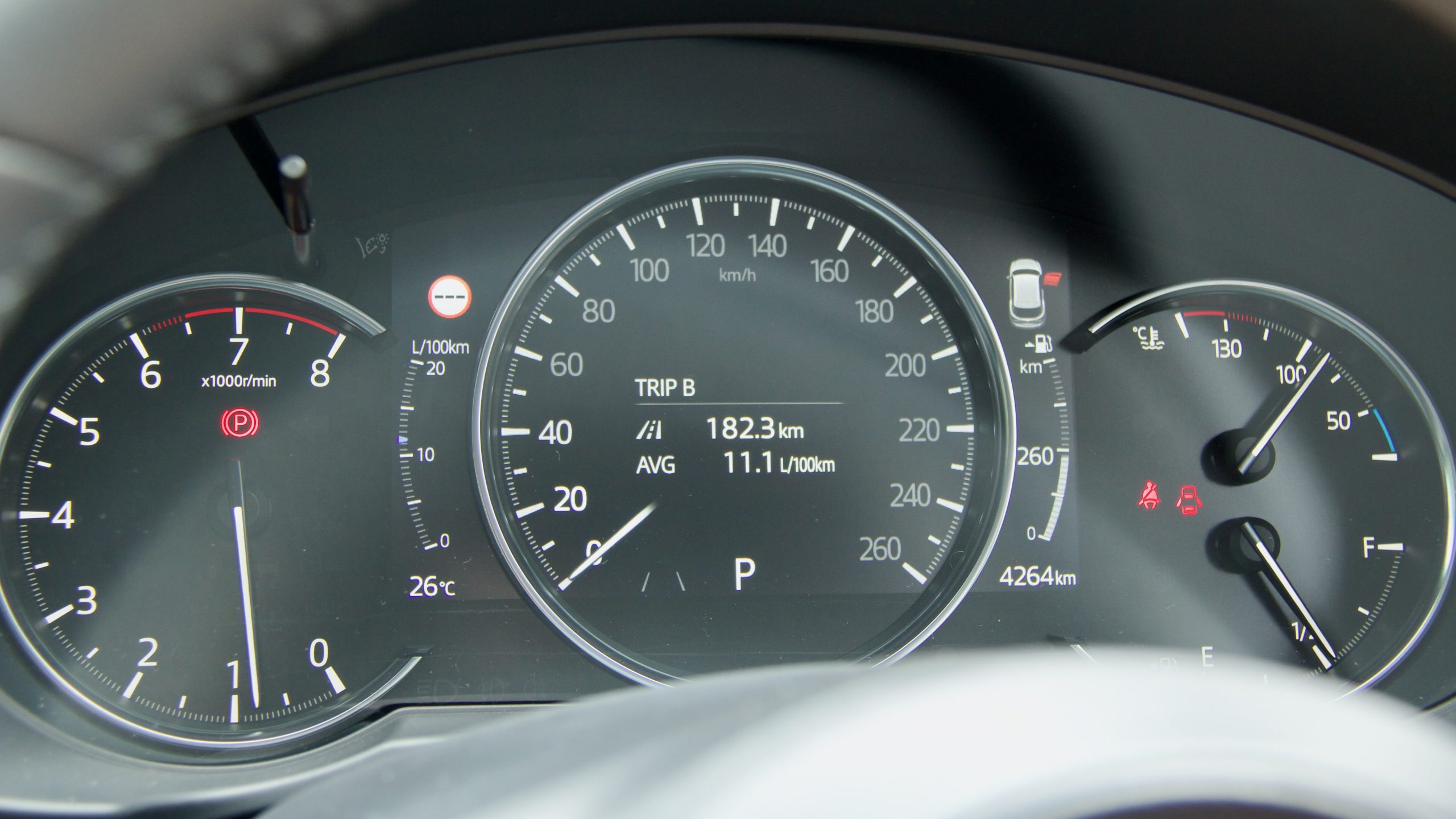
2.5-litre petrol engine (7/10)
Doing duty in the Active variant is a ‘SkyActiv-G’ four-cylinder naturally aspirated petrol engine, which develops 140kW of power (at 6,000rpm) and 252Nm of torque (at 4,000rpm). Like the diesel, it’s mated to a six-speed torque converter transmission and features all-wheel drive as standard. Compared to the somewhat anaemic 2.0-litre unit doing duty in lower-specced variants, the larger 2.5 engine is far better suited to to the CX-5.
Smooth and refined, the four cylinder unit isn’t a powerhouse, but isn’t a slouch either. Getting up to speed at city speeds is never a chore, and there is enough grunt on the highway, making overtaking at 110km/h more than achievable. An extra bonus is that the engine note is quite enjoyable. Peak power delivery does come high in the rev range though, so be prepared to rev the engine to get the best out of it. As with the rest of the Mazda range, newer DCT and CVT transmission technology are eschewed in favour of a traditional torque converter setup. The six speed unit in the CX-5 Touring makes driving a pleasure, it is intuitive and rarely ever gets caught out. While it might not shift quite as fast as a DCT, it is quick enough and lacks the downsides that come with DCTs and CVTs.
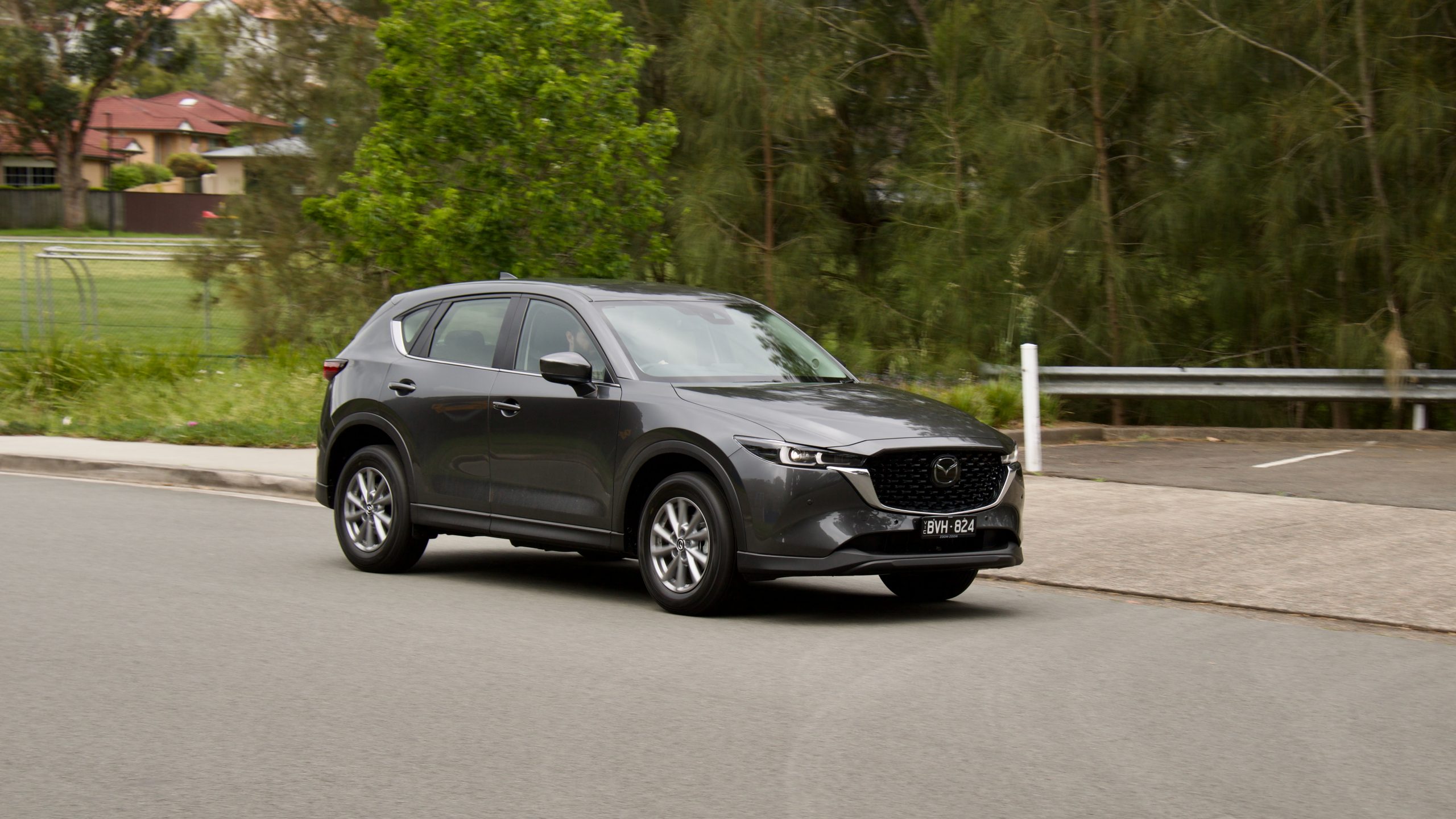
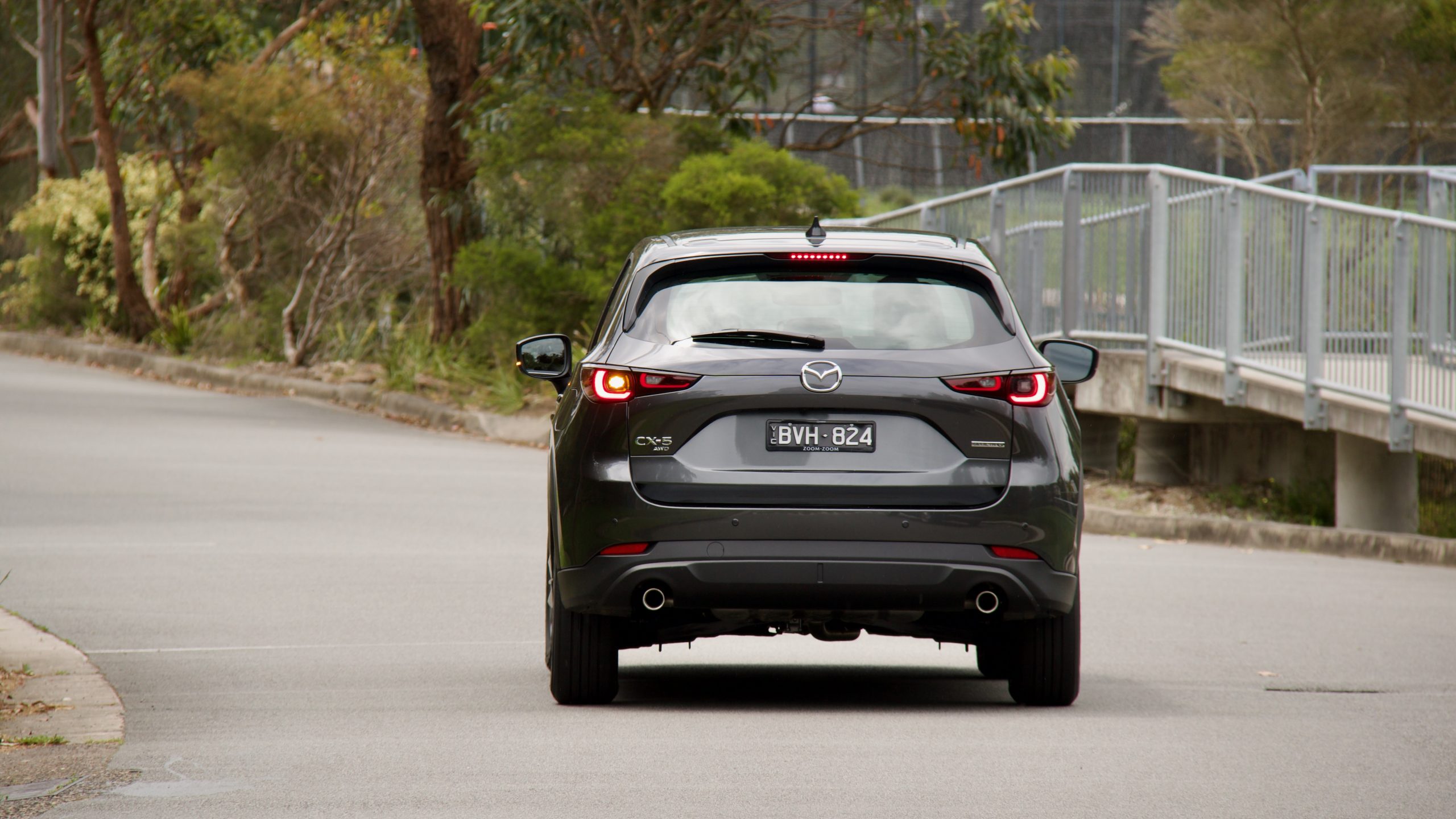
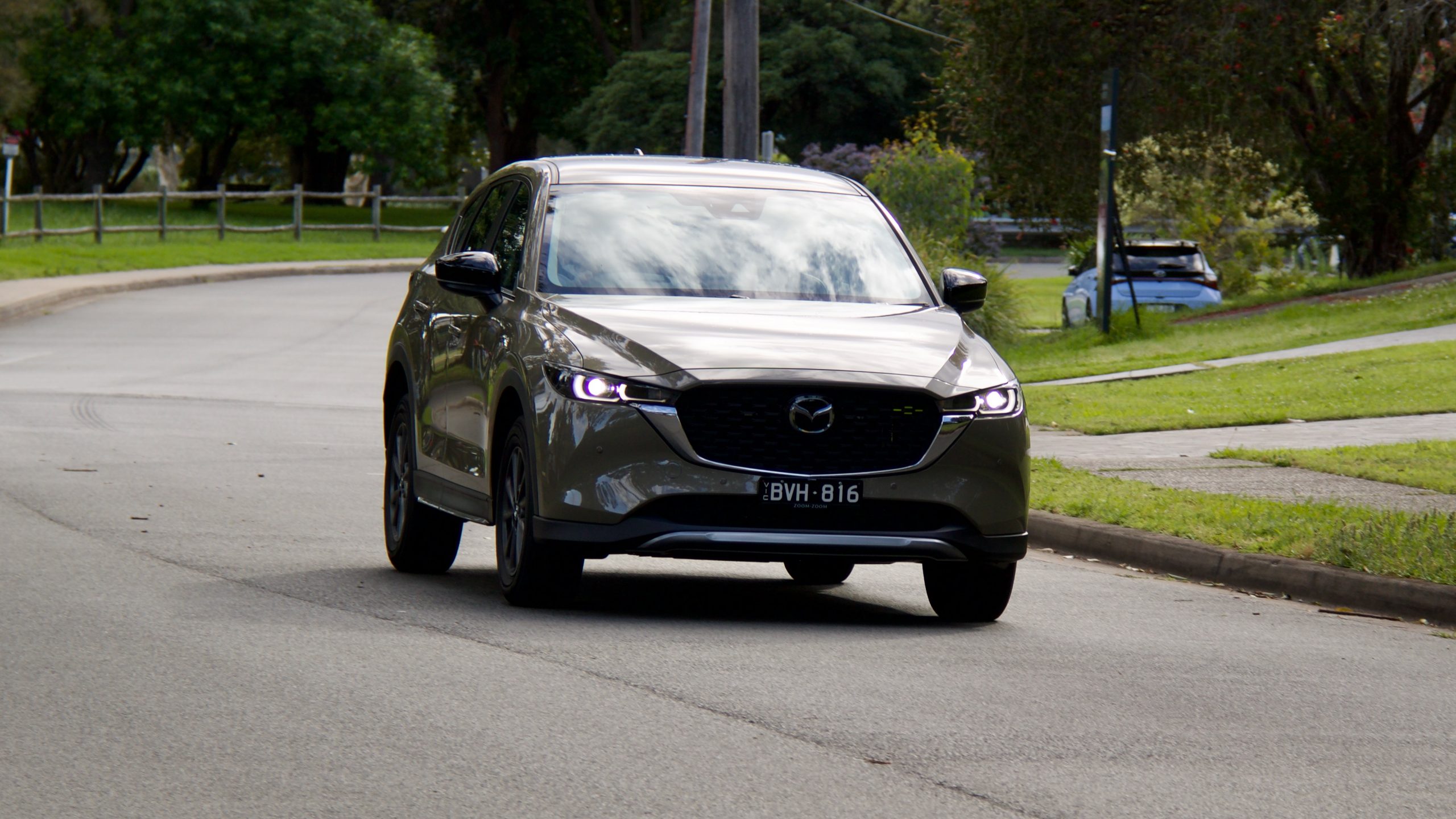
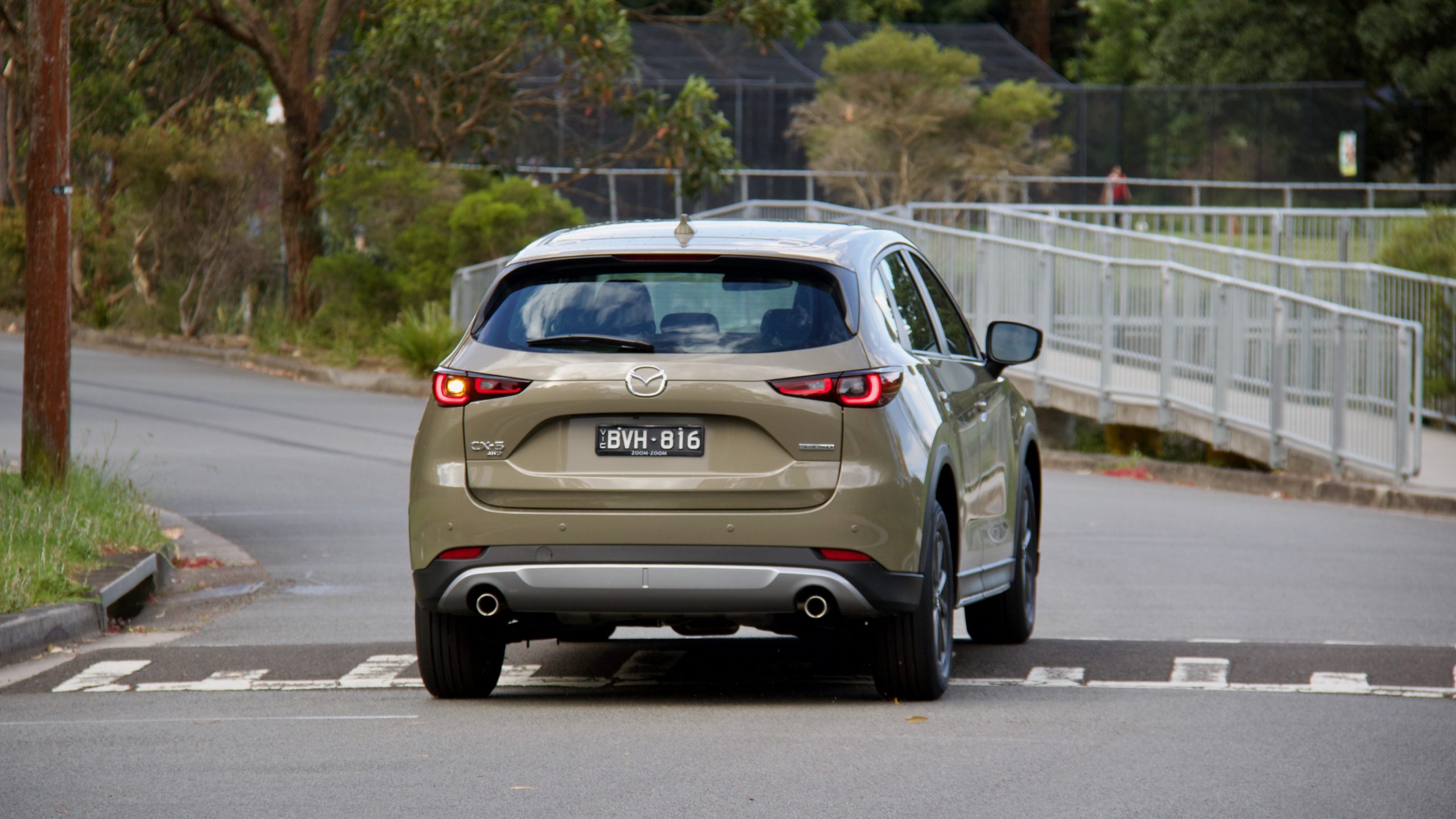
Looking at the fuel consumption figure in the dash is where the 2.5 litre petrol loses a bit of shine. Mazda quotes a combined figure of 7.4L/100km, but after our week week driving the CX-5 Touring on a combined cycle, we achieved 11.4L/100km. That being said, it’s about on par with the Sportage SX+, which in our testing achieved 11.2L/100km despite its smaller 2.0-litre size and lack of all-wheel drive. The RAV4 Cruiser petrol, albeit with a smaller 2.0-litre engine and front-wheel drive only, achieved 9.2L/100km when we tested it.
The CX-5 2.5-litre petrol will run on 91RON regular petrol and with the fuel economy we received, a full 58-litre tank should yield a range of around 500km.
2.2-litre twin-turbo diesel engine (9/10)
Mazda’s twin turbo ‘SkyActiv-D’ engine pumps out the same 140kW of power that the 2.5-litre petrol engine does, however it’s be accessed lower in the rev range at 4,500rpm, meaning it doesn’t have to be worked as hard as the petrol engine. Torque is a significantly higher 450Nm, which again peaks far lower in the rev range at just 2,000rpm. While the petrol engine is perfectly fit for purpose, the diesel option is a better performer. The torque increase is truly noticeable and simply not having to work as hard to get the best out of the engine makes it a more enjoyable prospect.
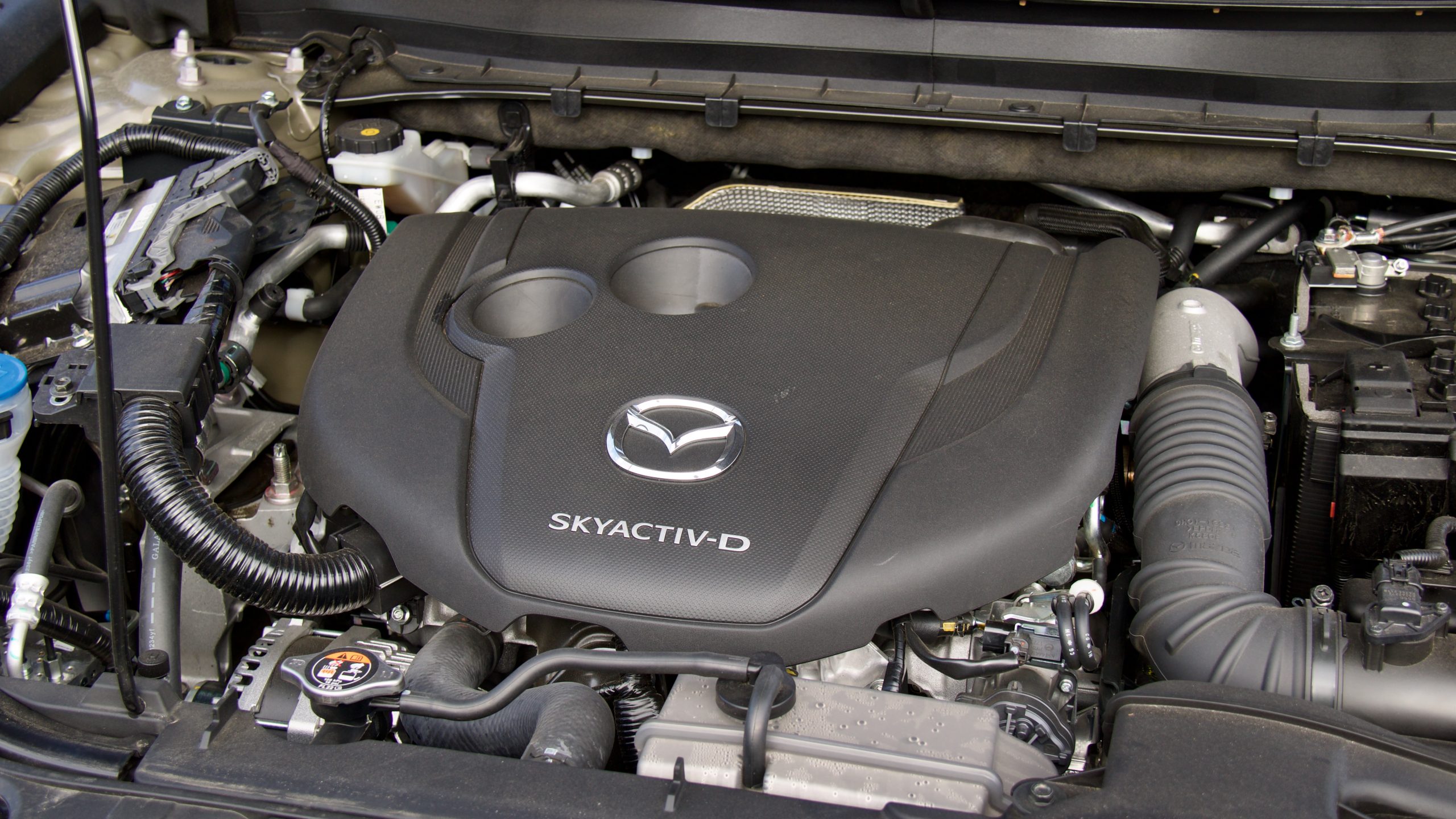
The engine note isn’t nearly as entertaining as the petrol and while the SkyActiv-D is remarkably quiet and refined for a diesel, it doesn’t quite match the silky smooth petrol engine. What it lacks in refinement, the diesel makes up for in efficiency. Mazda quotes a combined fuel usage figure of 5.7L/100km. After a week of mixed highway and town driving with traffic, we averaged 7.9L/100km – slightly lower than the 8.0L/100 we’ve achieved in a Kia Sportage SX+ diesel, though obviously quite a bit higher than a Toyota RAV4 XSE AWD Hybrid, which we’ve been able to achieve 5.6L/100km in. With a full 58-litre tank, drivers should be able to achieve a range of 730km.
Overall, if we were deciding between the two engines, we would go with the 2.2 litre turbo-diesel – it’s quicker yet far more efficient than the petrol engine, the only downside is a slight drop in refinement and also the lack of availability on the standard Touring variant.
Ride & Handling: 8.5/10
The CX-5 has long been lauded for its dynamic ability, and despite getting on in years, it remains amongst the best handling medium SUVs. Mazda really knows how to design a drivers car that finds a great balance between comfort and driver engagement – many other SUVs are designed purely for comfort. The steering is direct, giving a good sense of connection to the road. We enjoyed the weighting of the steering, but some may find it slightly too heavy.
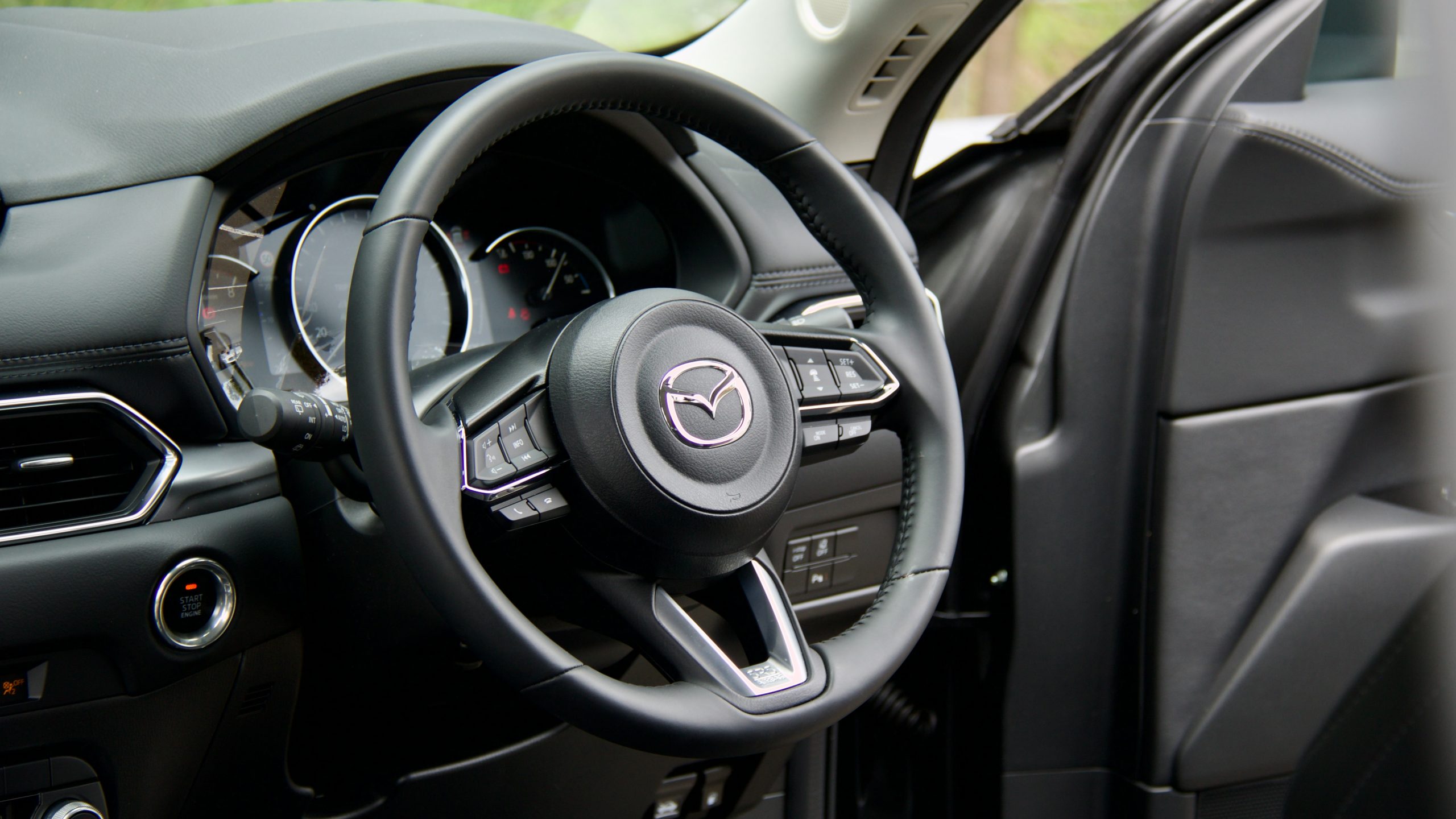
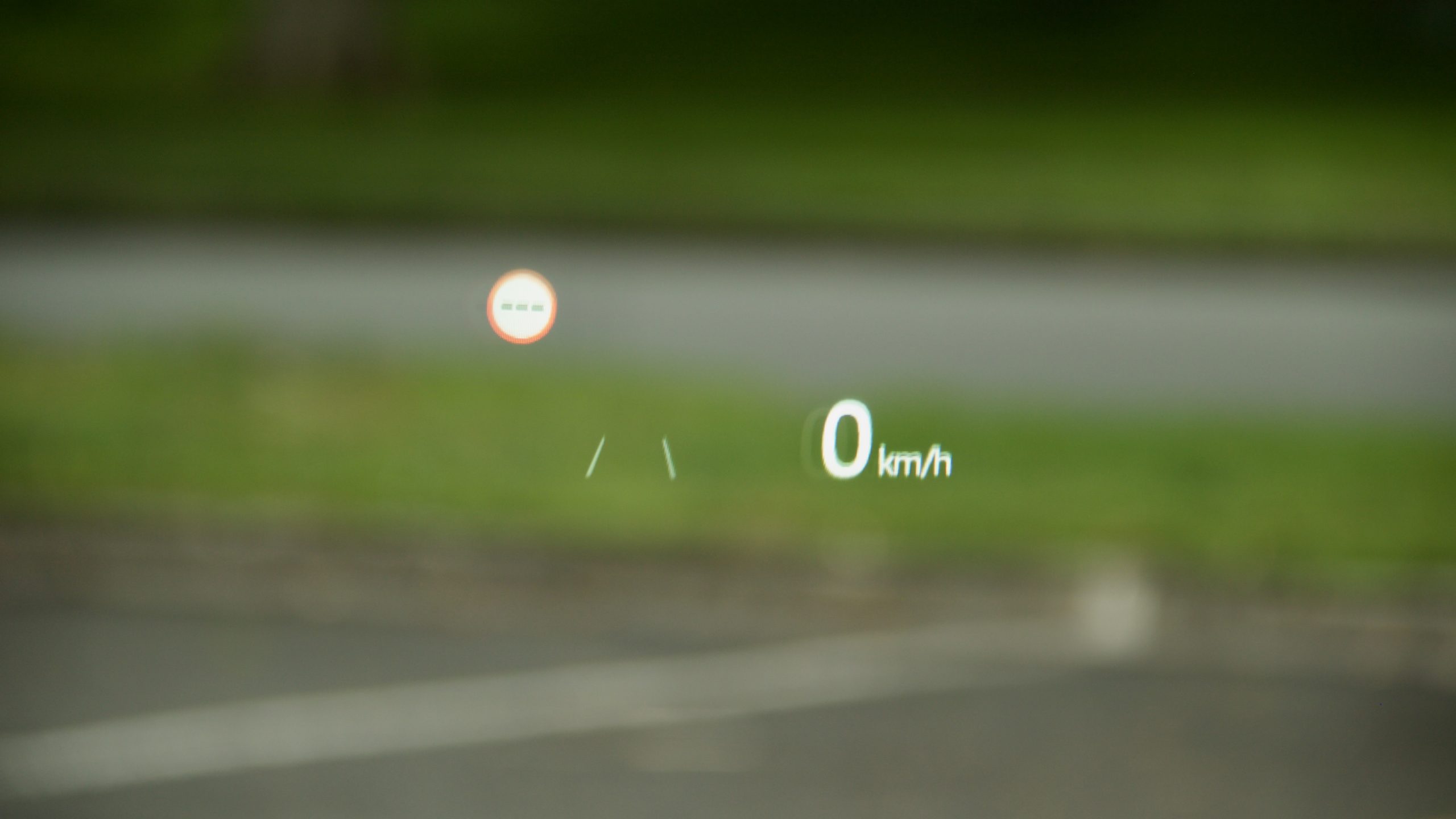
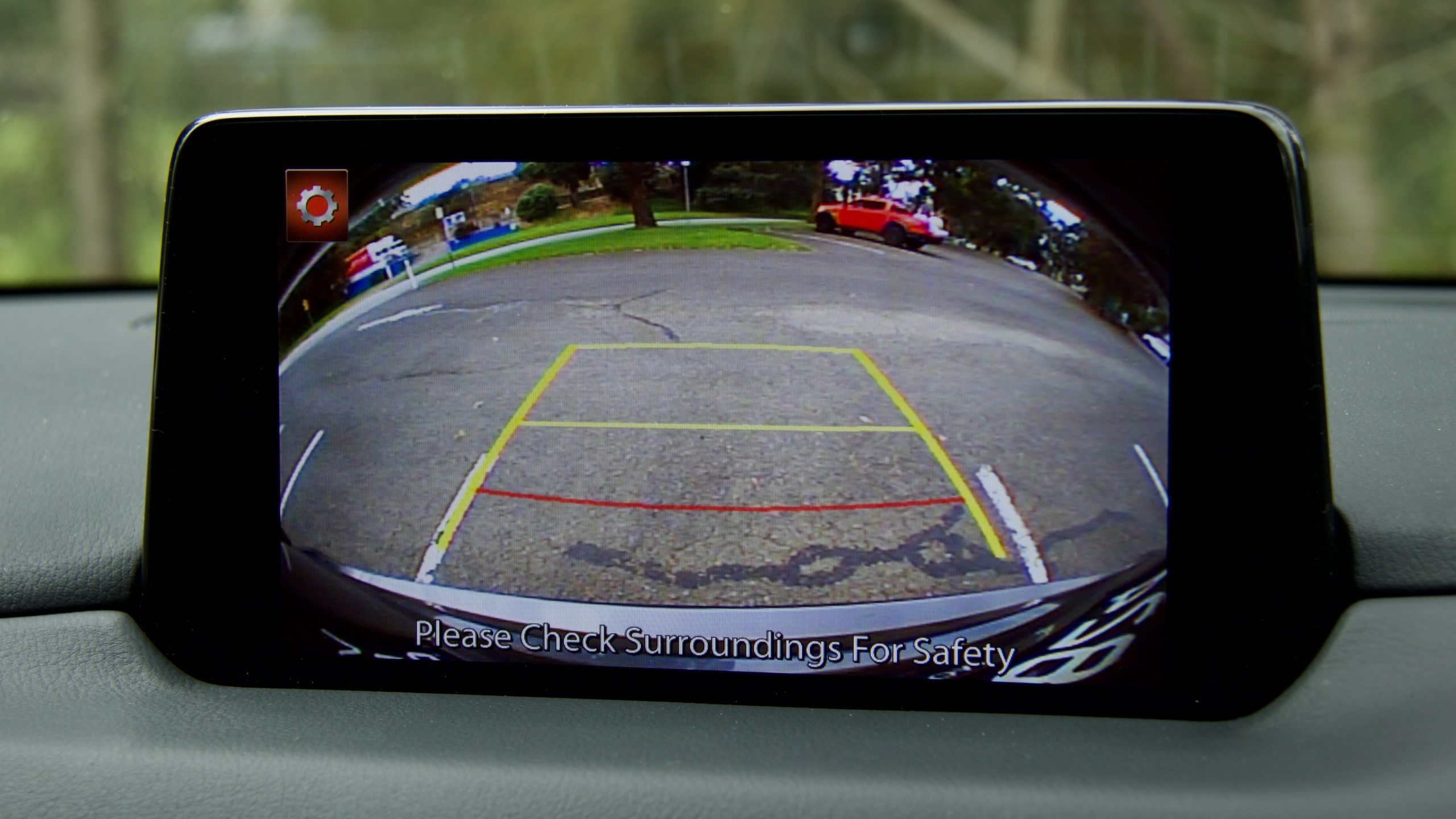
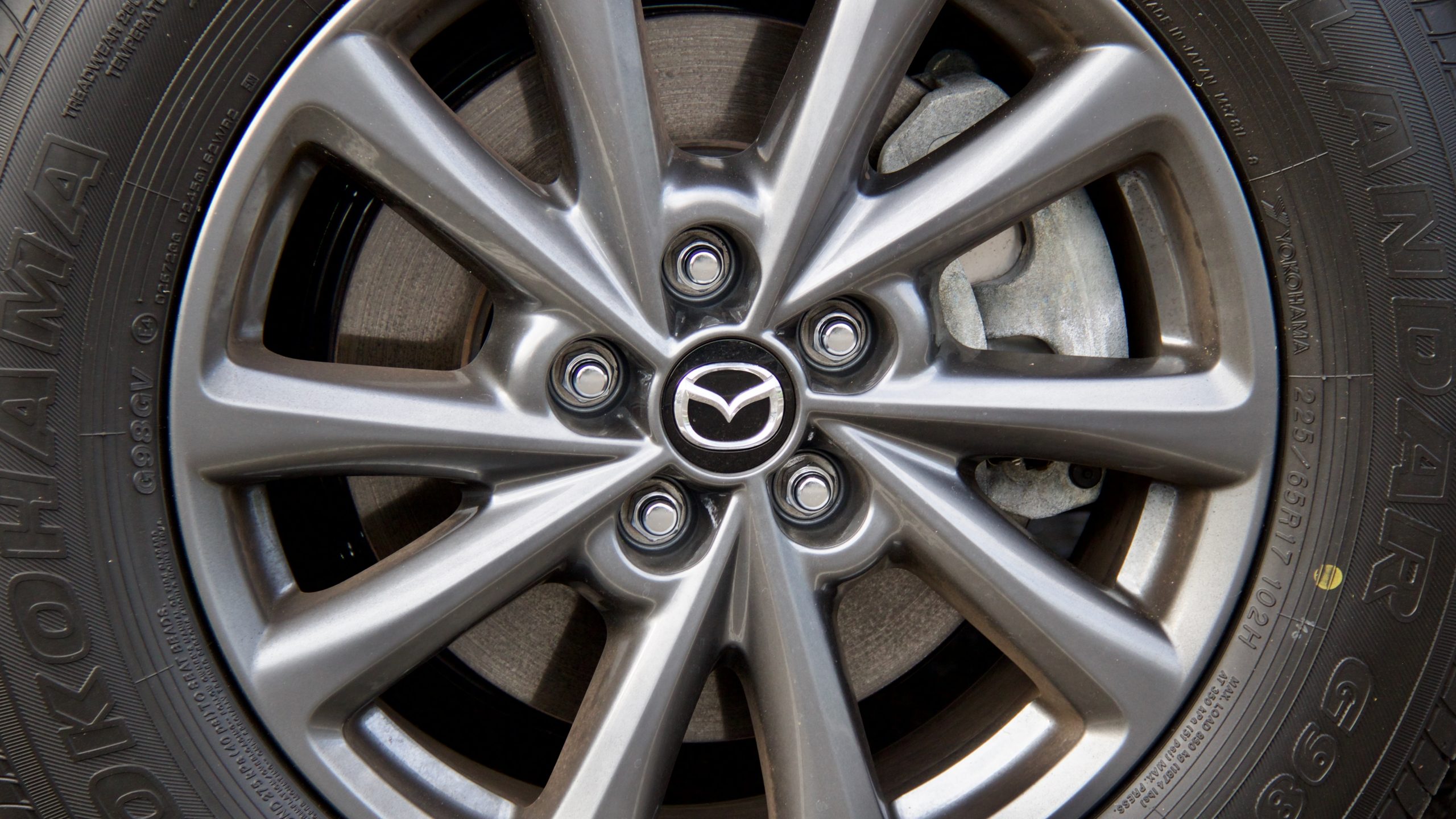
The 2022 Mazda CX-5 Touring and Touring Active feel more car-like to drive than many of their competitors, and when pushed hard, even feels slightly sporty. Body roll plus over and understeer are both pretty well controlled, even when pushing the CX-5 harder through corners. That being said, push too hard and you’ll be reminded that you are in a heavy SUV. The ride is definitely firm, though not to the point that comfort is sacrificed.
The suspension setup in the CX-5 does a great job at soaking up most imperfections our roads can throw at it and not a lot gets through to the cabin since the release the current generation CX-5, Mazda has made progress in improving cabin noise isolation – the result is a much quieter ride with much better suppression of road surface noise and wind.
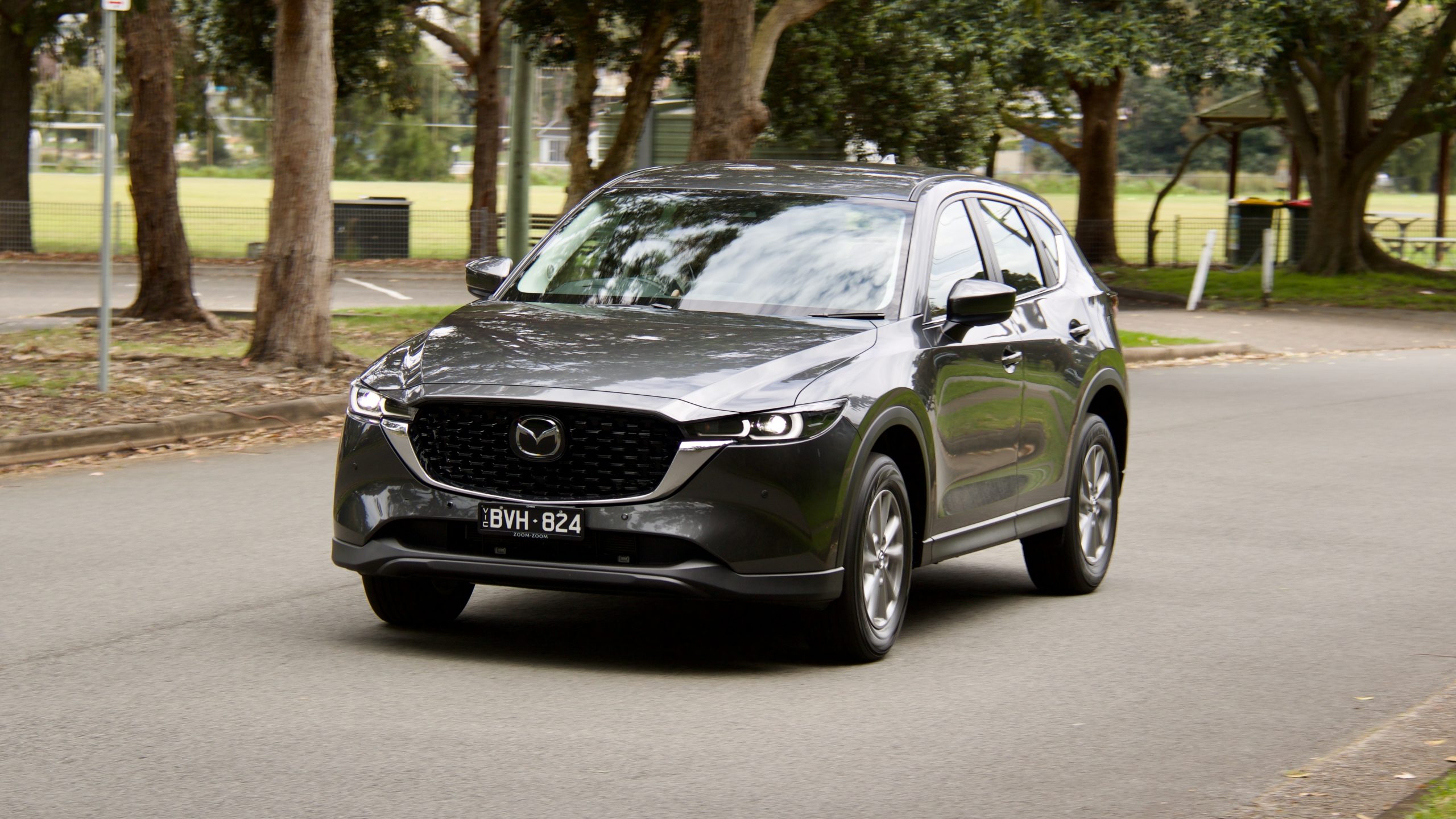
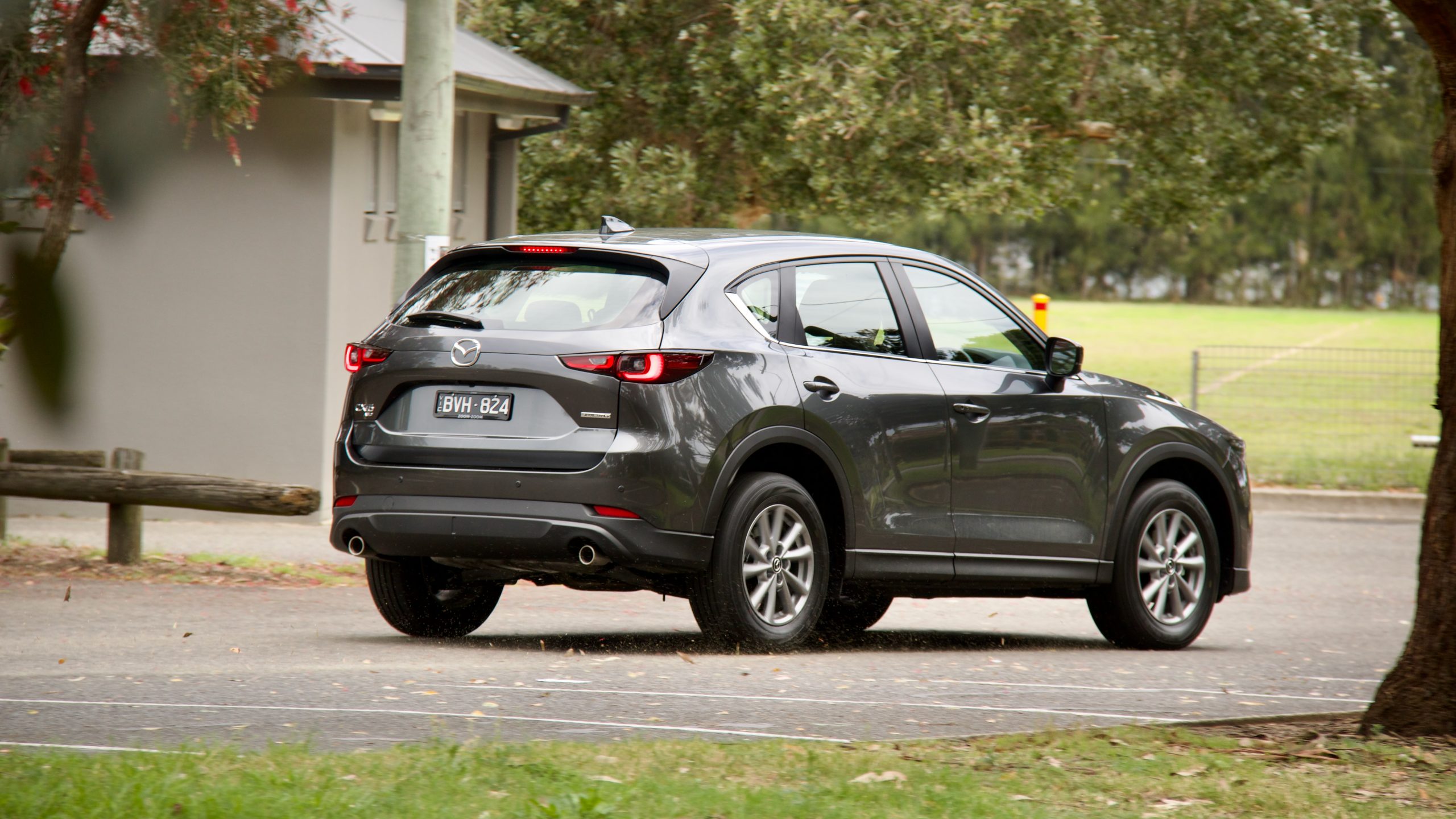
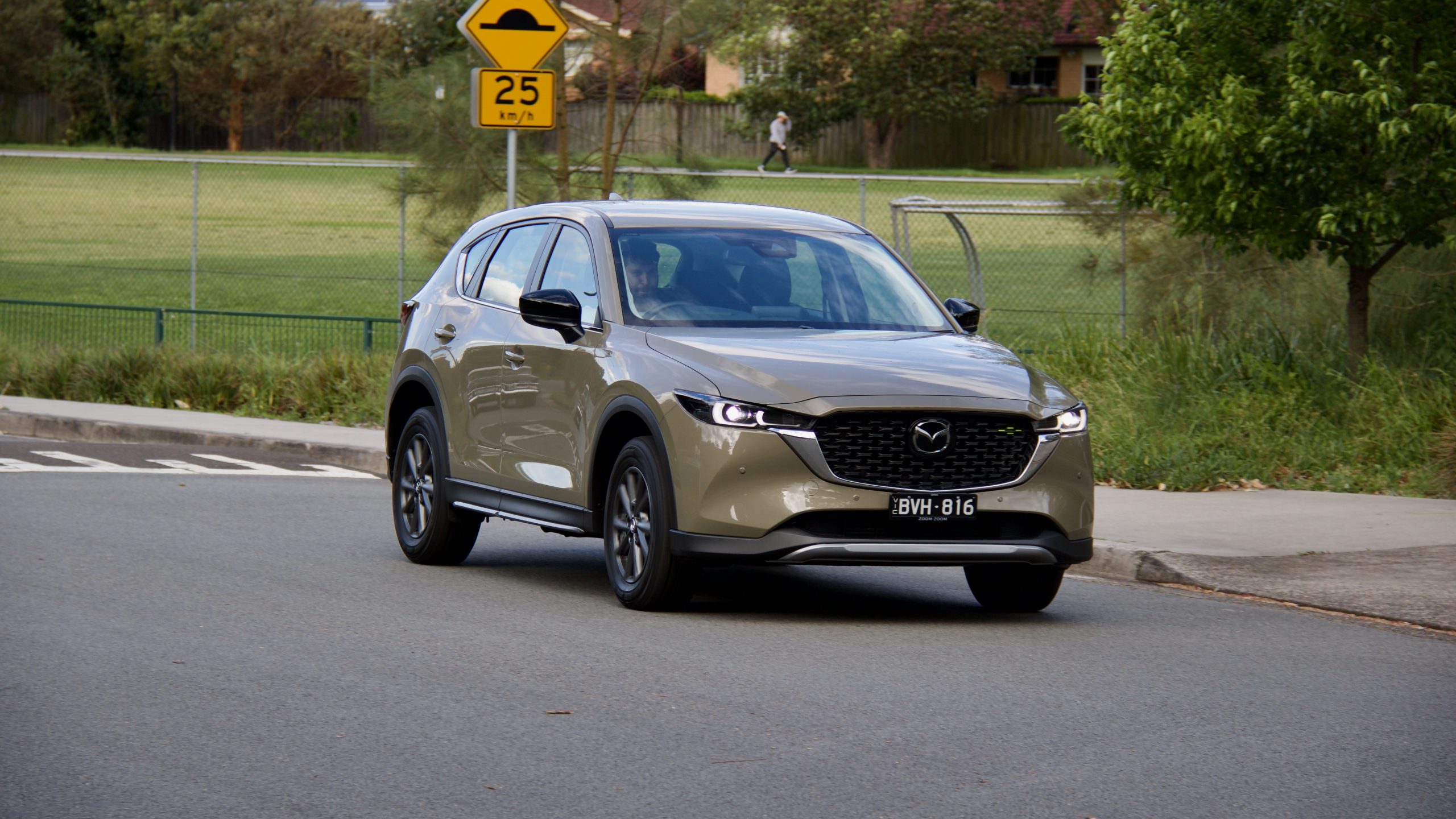
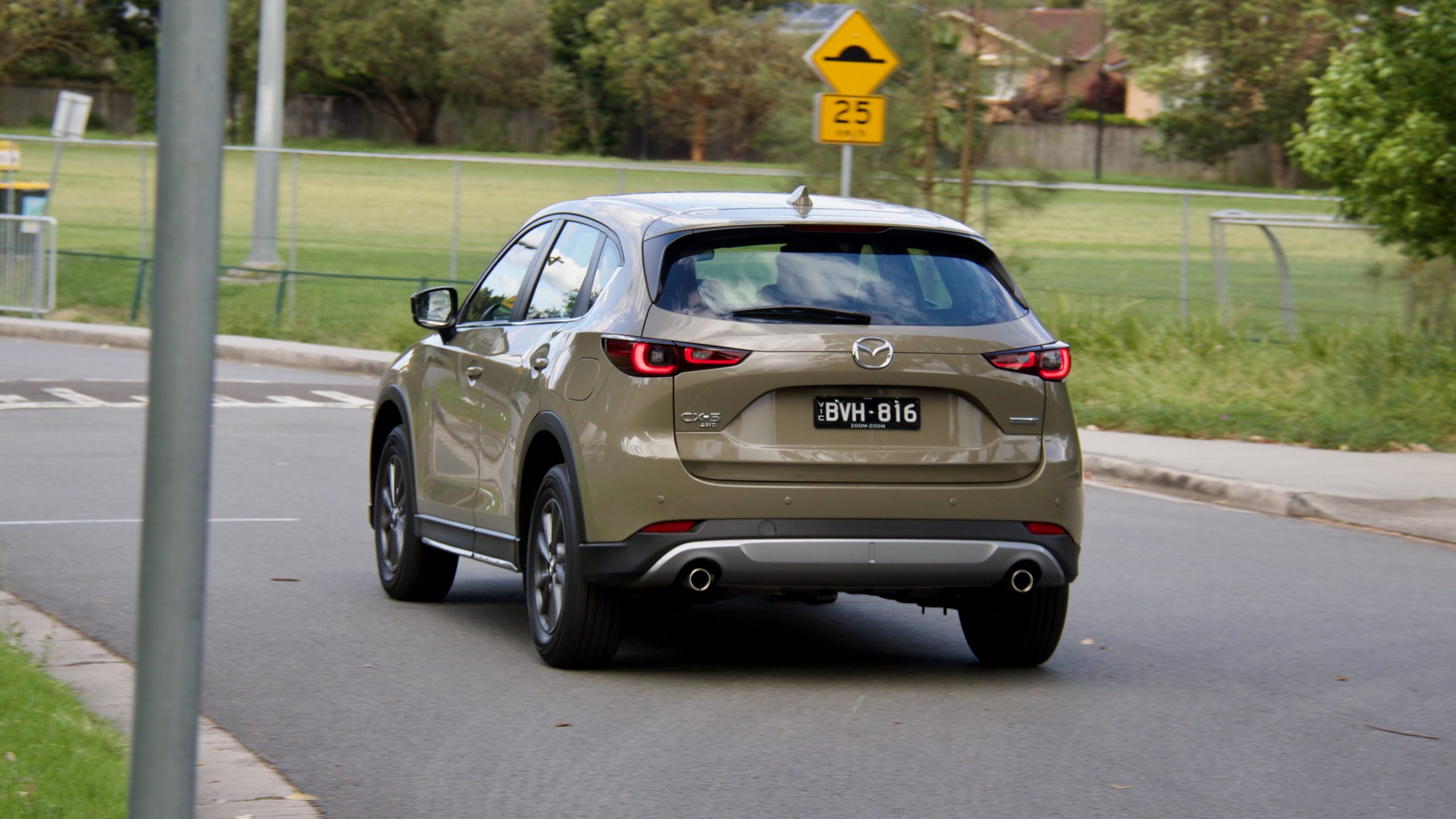
We also quite like Mazda’s active safety systems, which are well tuned and subtle as well. While they miss out on lane trace assist and a 360-degree camera, there’s quite a lot of active safety kit as standard. We particularly like the blind-spot monitoring and rear cross-traffic alert, while the auto high beam works quite well too.
Interior & Practicality: 7.5/10
Stepping inside the cabin of the 2022 Mazda CX-5 Touring and Touring Active reveals a classy and pleasant space, but one that is definitely starting to get on in years. Luckily Mazda makes up for this by its high quality. Most of the common touch points are covered in high quality soft touch materials used throughout the cabin and the material quality in general is top notch – again something Mazda excels in. The steering wheel is chunky and well finished and switchgear throughout the cabin gives great tactile feedback. All of this combines to give drivers a feeling of quality and luxury when in the CX-5. You definitely notice hard plastics in places where higher specced CX-5 models get soft touch materials, though at least the plastics feel like they’ll last well.
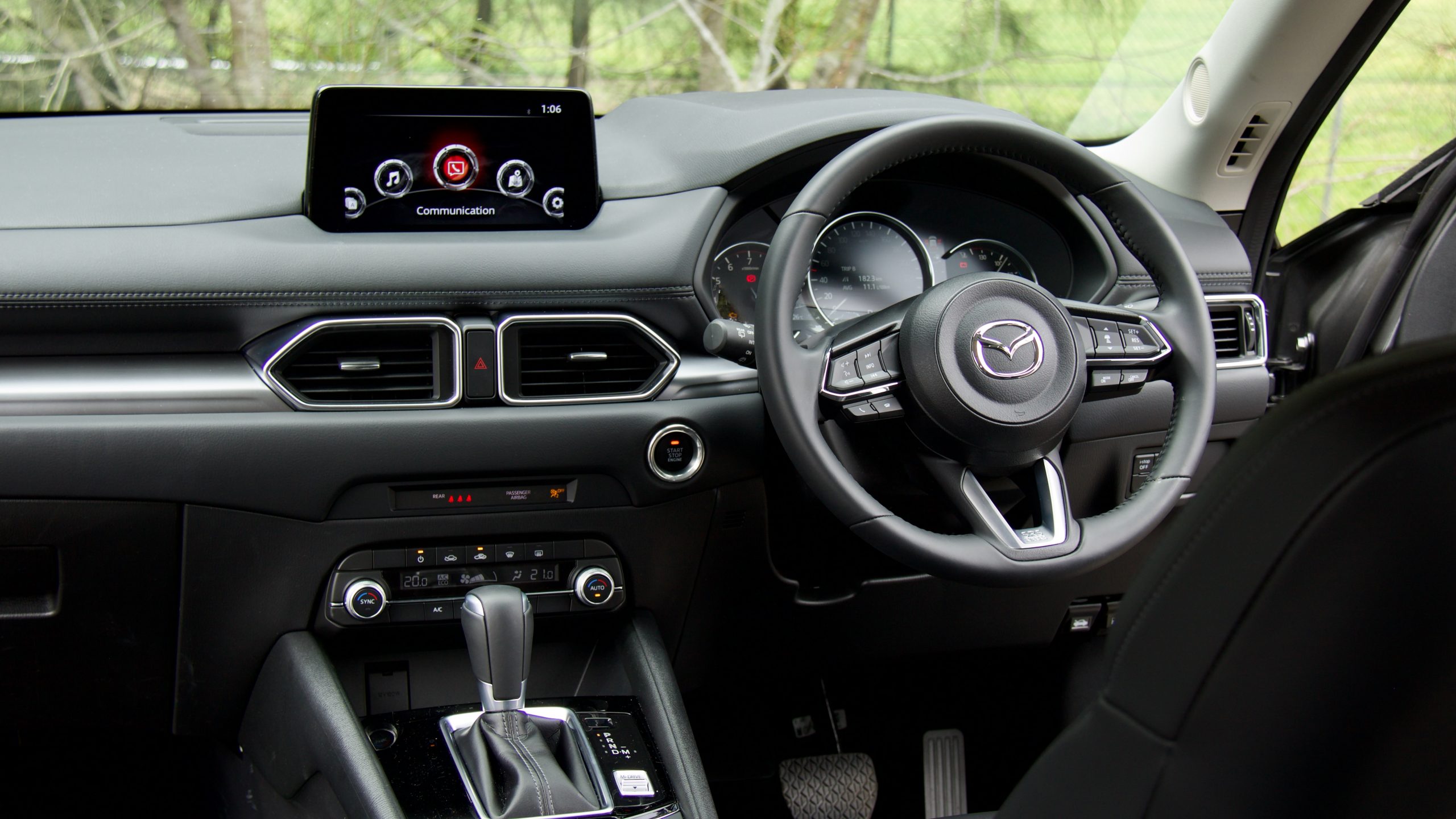
The Touring is trimmed in a combination of black ‘Maztex’ and Synthetic Suede, the Touring Active features the same materials but with different patterning and, lime green highlights that extend to the front AC vents. Unless you really, really love green, we don’t see the green accents as a reason to pay the extra over the Touring. The trim in both, while not real leather, still feels great and the seats are quite comfortable with good support with good bolstering. We do wish that there were more ways of adjustment for the seats, which only have six ways of manual adjustment, making it a little harder to get comfortable than it should be at this price point.
Ahead of the driver sits a 7.0-inch driver’s display integrated into a traditional instrument cluster. The crisp graphics, while a bit traditional, are a pleasure to look at with a feeling of quality and classiness. The heads-up display is also appreciated. Visibility all around is a bit limited though – the rear hatch is relatively small and the slope of the boot makes the rear quarter windows small, creating a bit of a blind spot, though this is helped by having a good reversing camera and parking sensors. Mazda’s flat driver side mirrors can be frustrating, creating bigger blind spots. A 360-degree camera would be welcome, as it is limited to the top spec Akera.
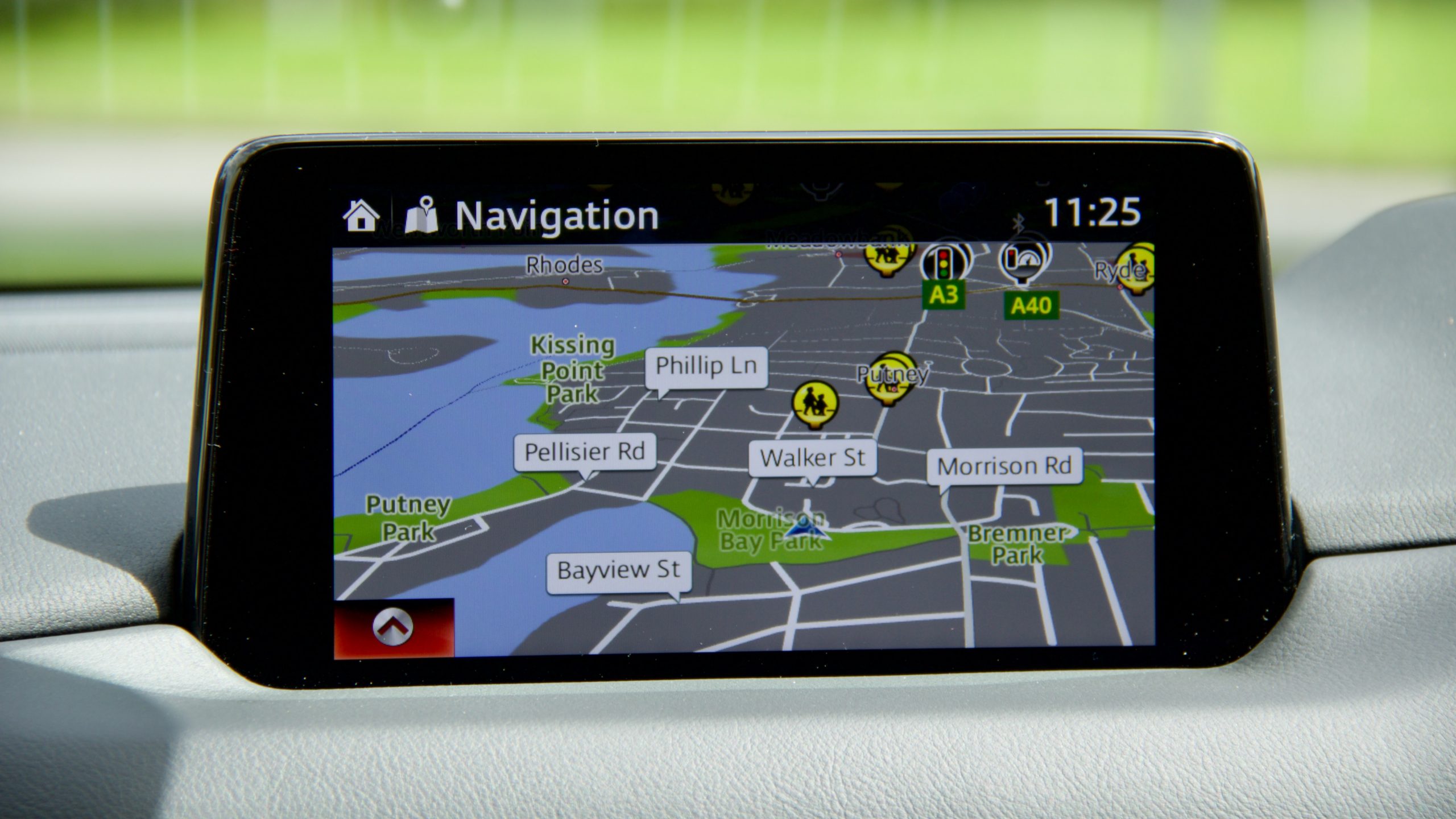
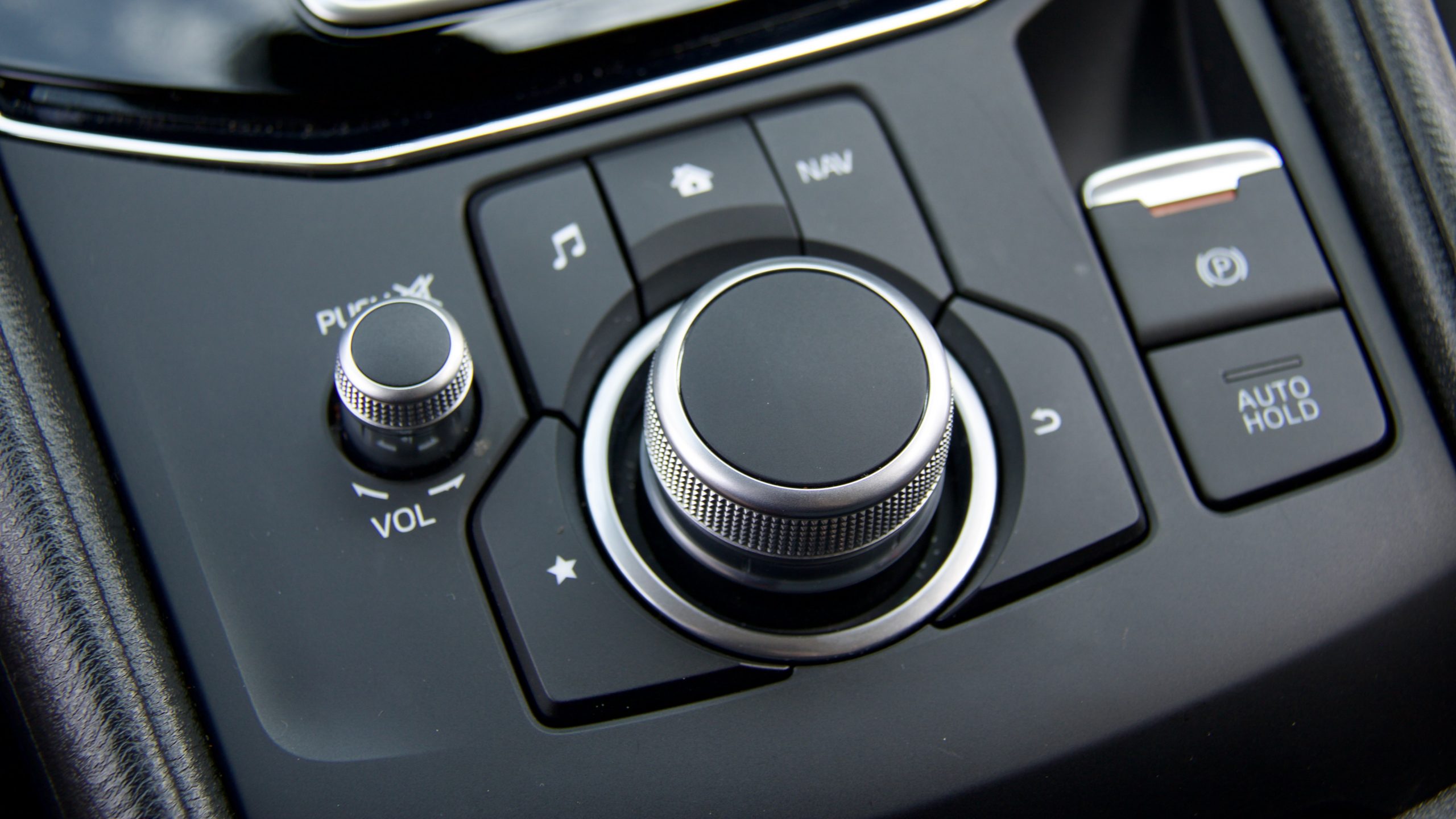
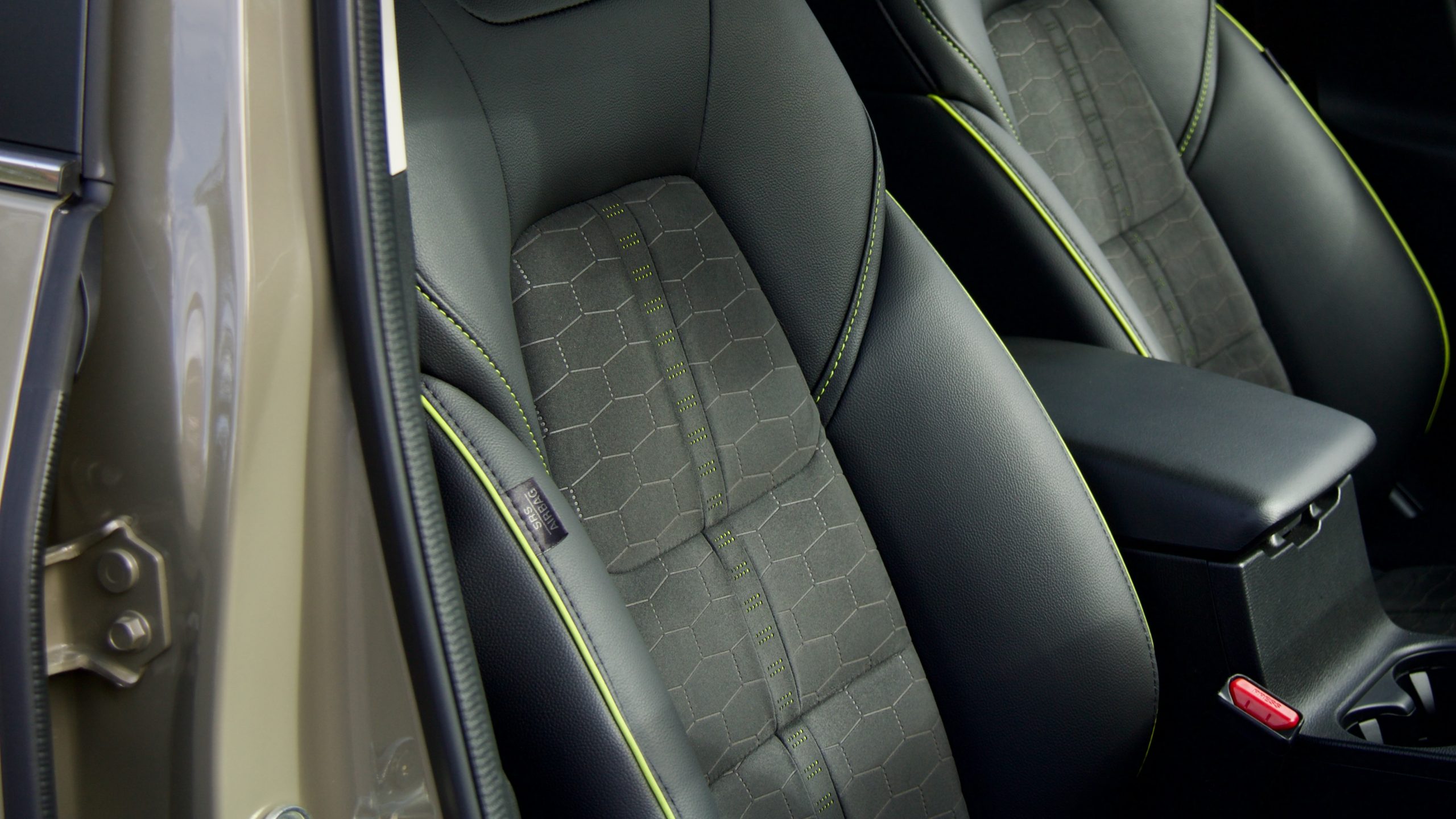
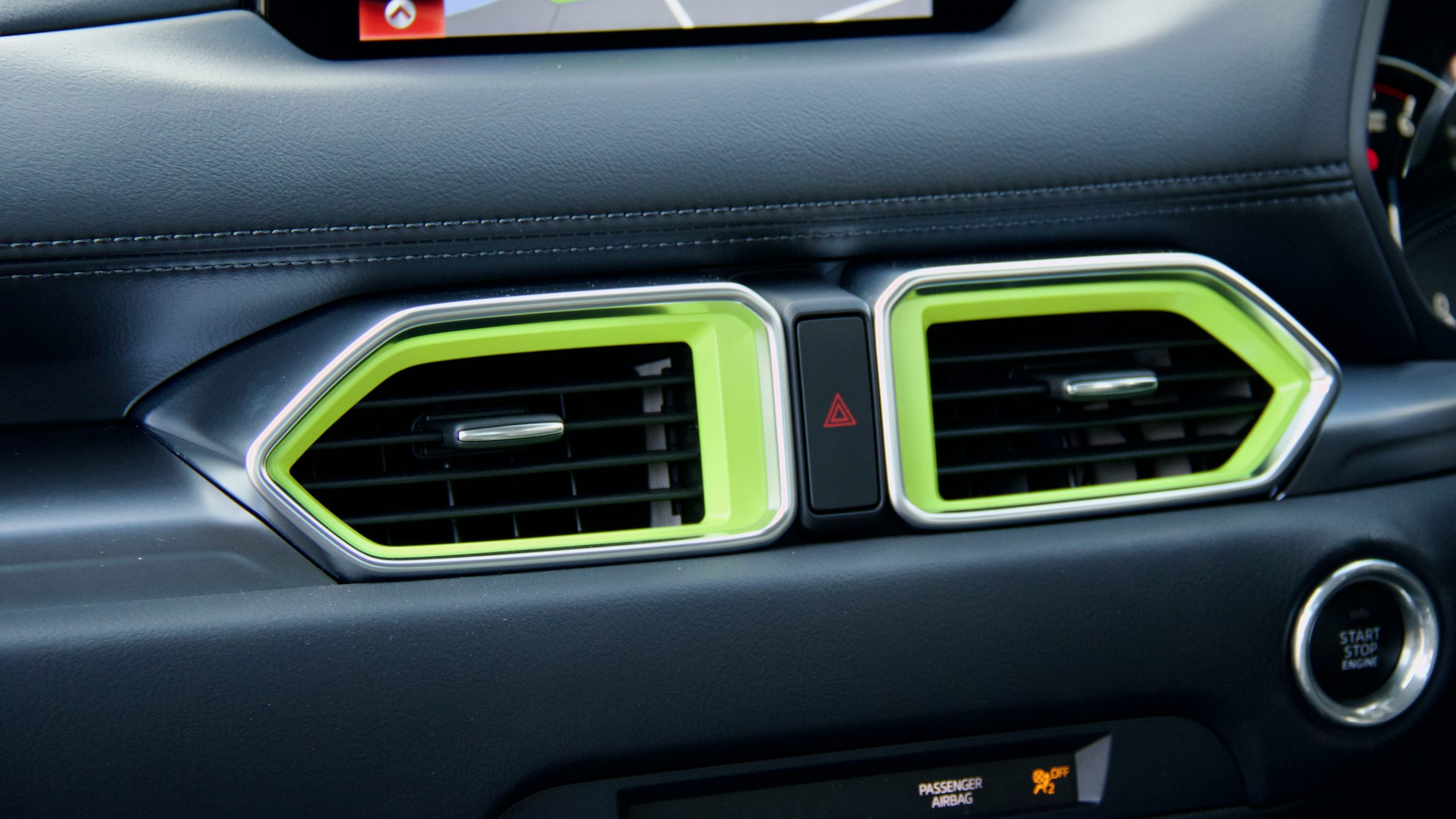
Infotainment is handled by an 8.0-inch touchscreen, which feels dated. Getting on eight years old now, the graphics are aged and the screen is small. It is fairly well featured however, with wired Apple CarPlay and Android Auto, DAB/FM/AM radio and Bluetooth.
At the risk of sounding like a broken record, unfortunately the display is only a touchscreen when the vehicle is stopped, with Mazda’s signature command controller taking over duties when the car is in motion. While the dial is a good idea in some circumstances – in many instances, especially hone using CarPlay or Android Auto, it would be less distracting to select a function by touching, rather then endlessly turning a dial to manoeuvre a small selector across the screen – phone mirroring systems were simply designed for touchscreens. Mazda has announced a 2023 refresh of the CX-5, which addresses our issue with the small and dated screen, however it completely removes touchscreen functionality all together: two steps forward and one back.
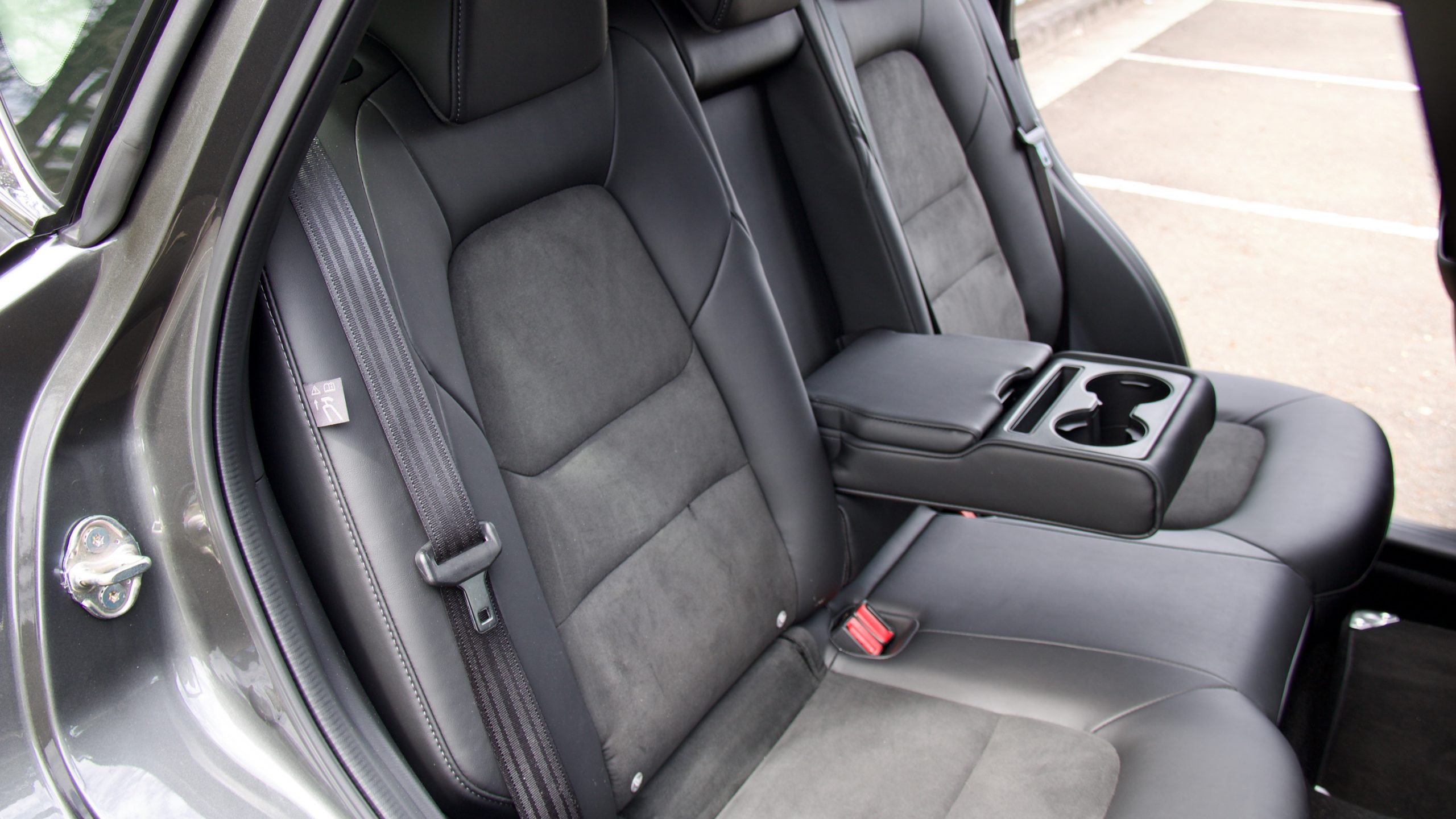
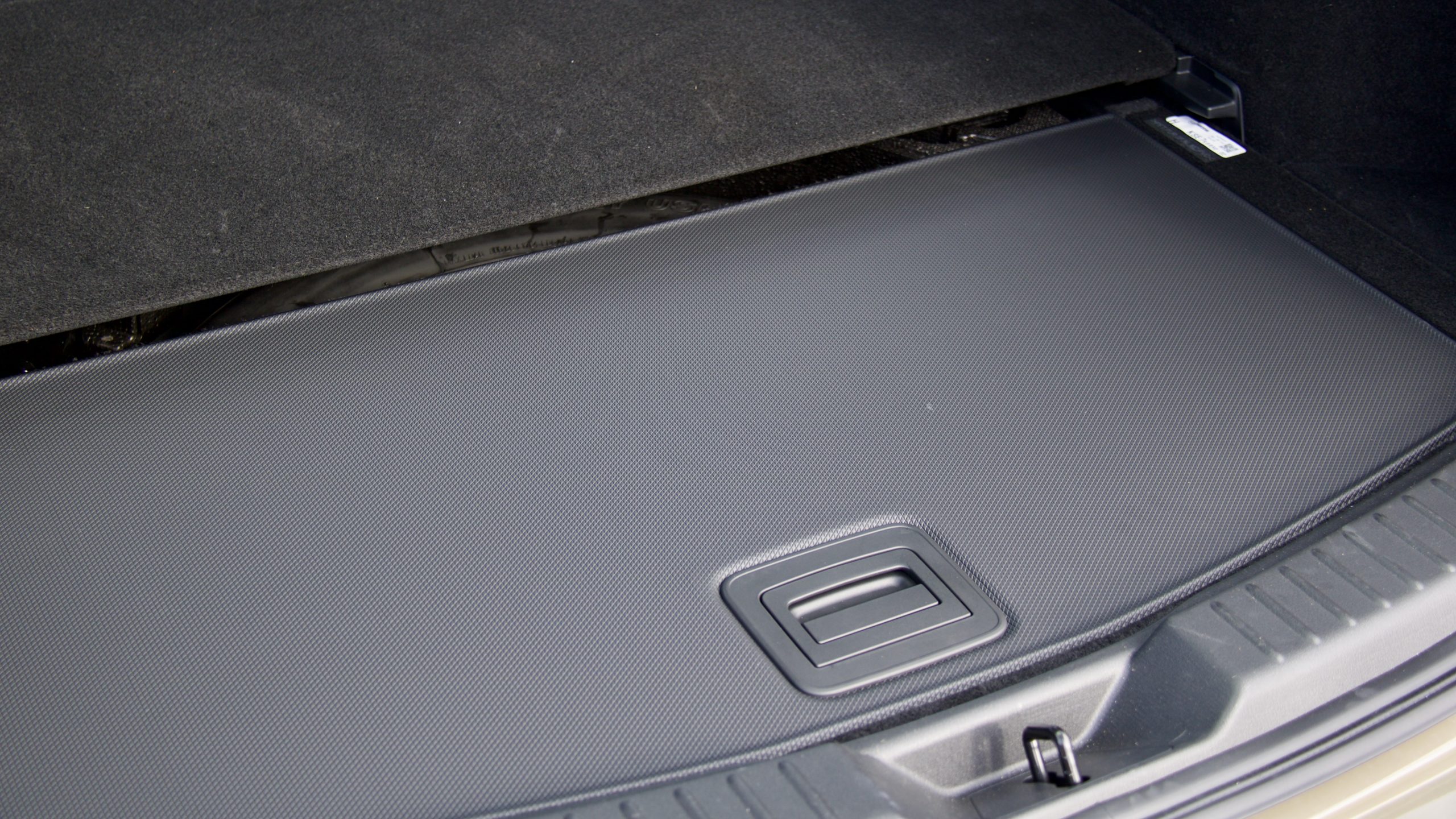
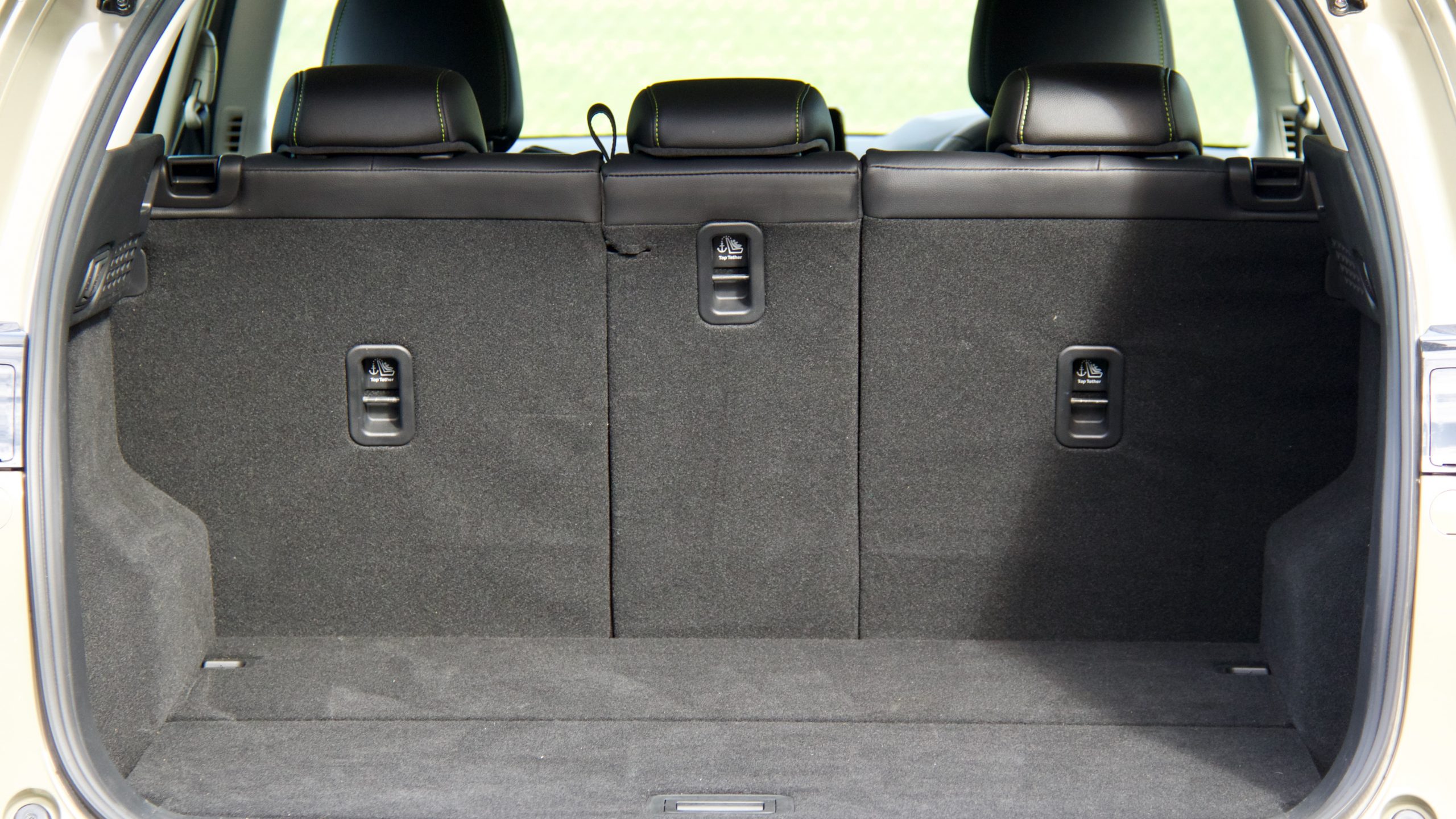
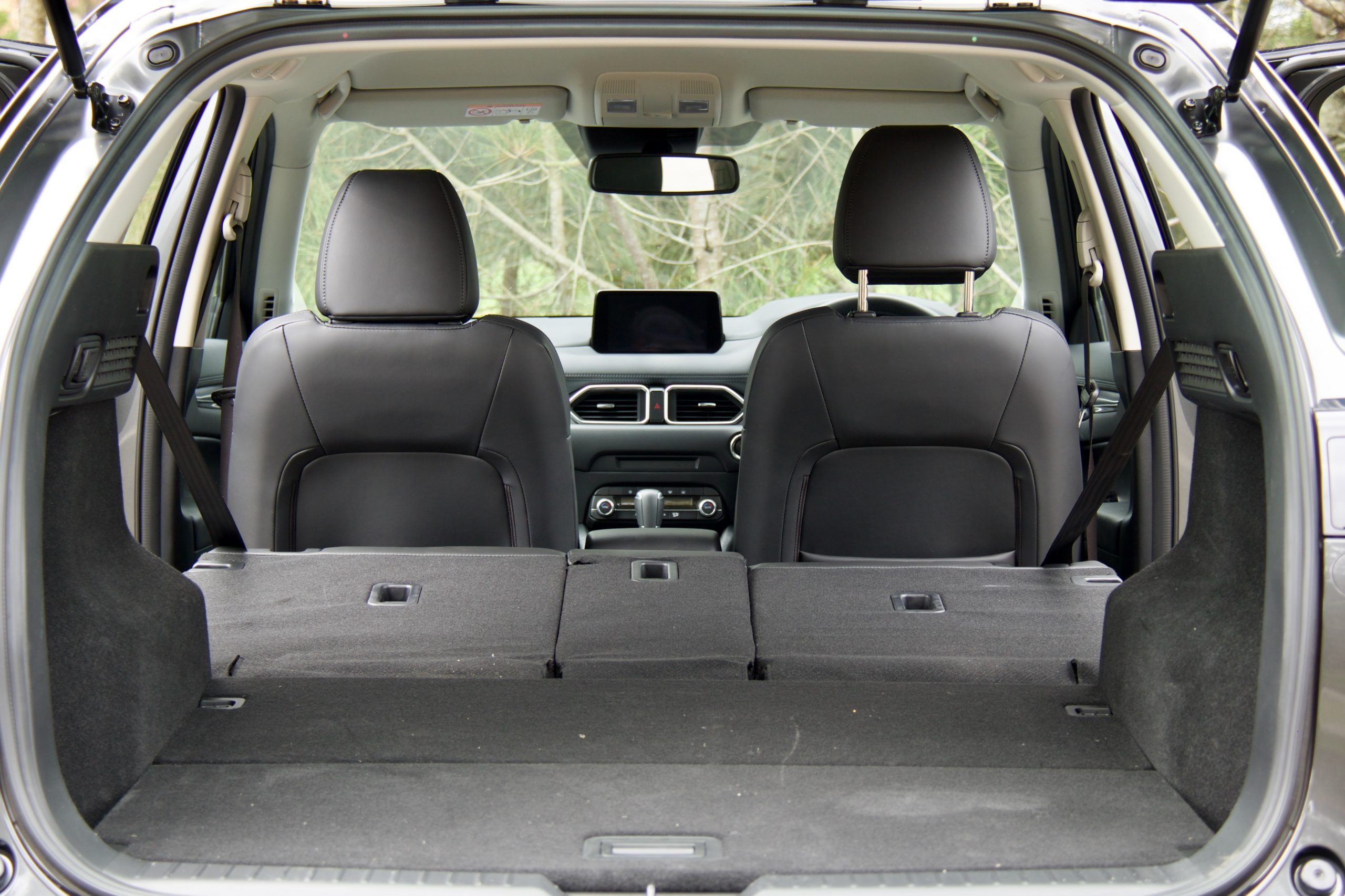
There are two USB-A ports up front and a wireless charger to take care of front passenger device charging needs. The cabin features a reasonable amount of storage throughout with a large space under the centre armrest, capacious door bins, a big glovebox and cupholders throughout. The rear seats aren’t as good as some competitors and are a bit of a let down – taller passengers will find a lack of headroom and leg/knee room tight, though smaller adults and children should be comfortable enough. The middle seat can accomodate adults but is better on shorter trips or for children. At least rear seat passengers get air vents, map pockets and two USB charging ports in the console of the fold down centre armrest.
Moving into the boot of the CX-5 reveals a small for class 442-litre capacity with the seats up, which expands to 1,342L when the rear seats are folded – the seats fold almost flat, but a RAV4 has 100L more space with the seats up and 348L more with the seats folded. But Mazda gets extra points for the 40:20:40-split rear seat, offering good flexibility and almost unique in the segment. Mazda equips the CX-5 with a space saver spare, stowed under the boot floor, while there’s also a dual-level boot floor (one side is carpet and the other side is plastic, so you can hose it off) and some cargo hooks too.
Service & Warranty: 8.5/10
Mazda offers a five year warranty on both models of the CX-5 we tested. In comparison, Toyota offers five years for both RAV4 models we used as comparison points, extendable to seven years for the drivetrain if servicing is carried out as per the logbook. Kia bests both with seven years of warranty for both Sportage models. In terms of roadside assistance, Mazda includes five years with the CX-5, Toyota includes none with the RAV4 and Kia gives the Sportage range one year of roadside assist, however with each scheduled service at a Kia dealership, another year is added on, to a maximum of eight years.
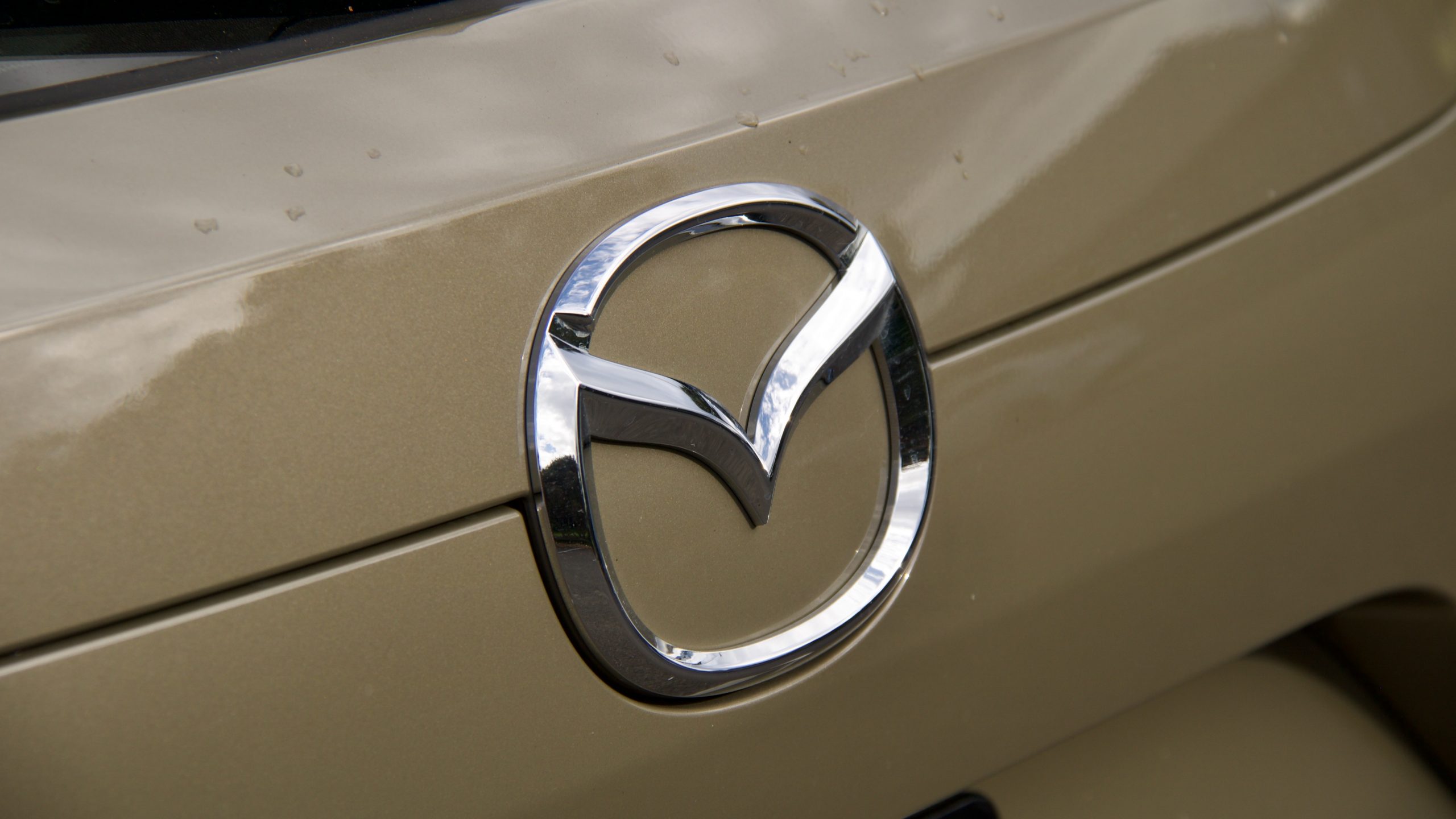
The CX-5 costs $2,073 to service over five years, with a service interval of 15,000km or 12 months (whichever comes first) – the diesel requires more frequent servicing at every 10,000km or 12 months (whichever comes first), adding up to $2,322 for the first five years. Servicing both our comparison models of the RAV4 is much cheaper – both cost a total of $1150 over five years, with capped price servicing available for the first five years – service intervals are the same as the Touring, 15,000km or 12 months (whichever comes first).
The most expensive of the bunch are the two Sportages – the SX+ petrol costs $2,395 to service over the first five years and the SX+ diesel costs $2,512. Service intervals are 15,000km or 12 months (whichever comes first) for both.
2022 Mazda CX-5 Touring & Touring Active DiscoverAuto Rating: 8.0/10
The 2022 Mazda CX-5 Touring remains an evergreen option, even in the face of newer competitors – it’s easy to see why the CX-5 remains a hit amongst Australian car buyers. It’s lovely to drive and has a classy and high quality interior. However, there are cracks appearing – the second row and boot don’t compare favourably with competitors plus the Active and Touring variants are missing a fair bit of equipment and aren’t cheap. Our concerns with the infotainment system however have been partially addressed in the 2023 model update.
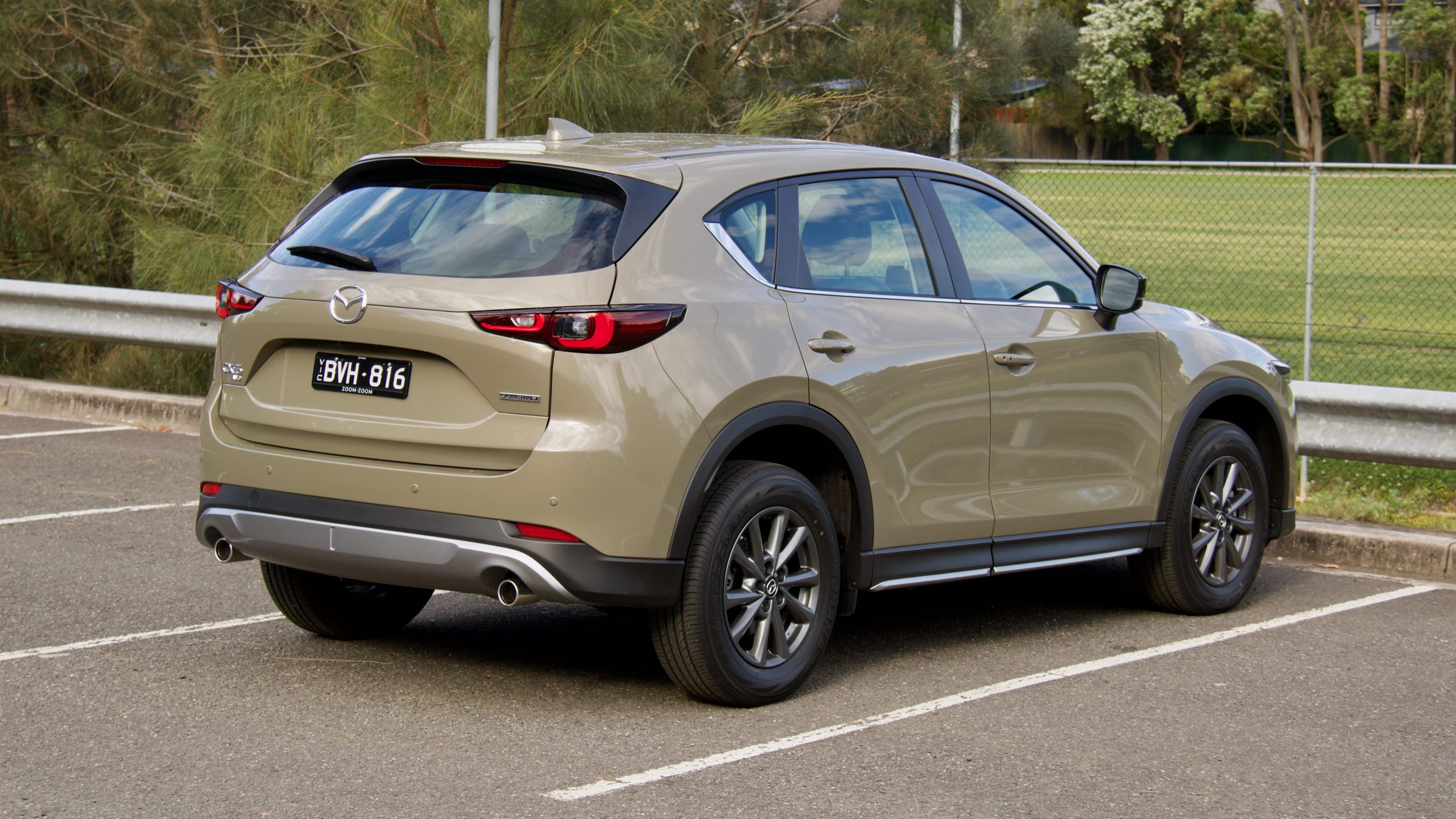
For the most part, we don’t see the Touring Active as worth the extra outlay, except that it is the cheapest way to get a diesel CX-5. While the 2.5-litre petrol engine is lovely, it’s just too thirsty. It’s also hard to justify the extra spending on the diesel when the RAV4 XSE hybrid can be had with more equipment, far lower fuel consumption for around the same price (if you’re willing to wait a while!). But we still think that the CX-5 still deserves to be on your list if you’re searching for a mid-sized SUV, if for the sublime ride/handling balance and classy interior.
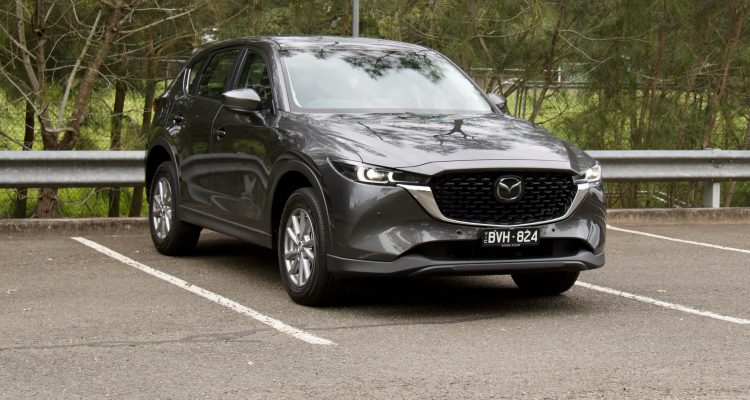
Leave a Reply